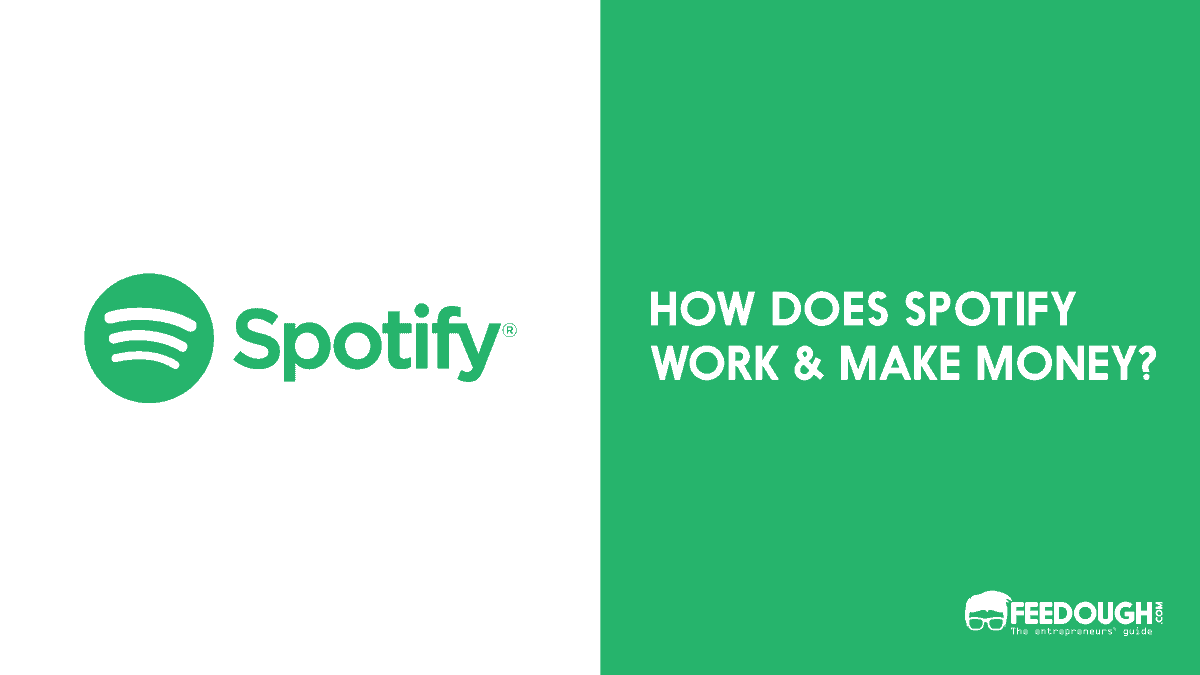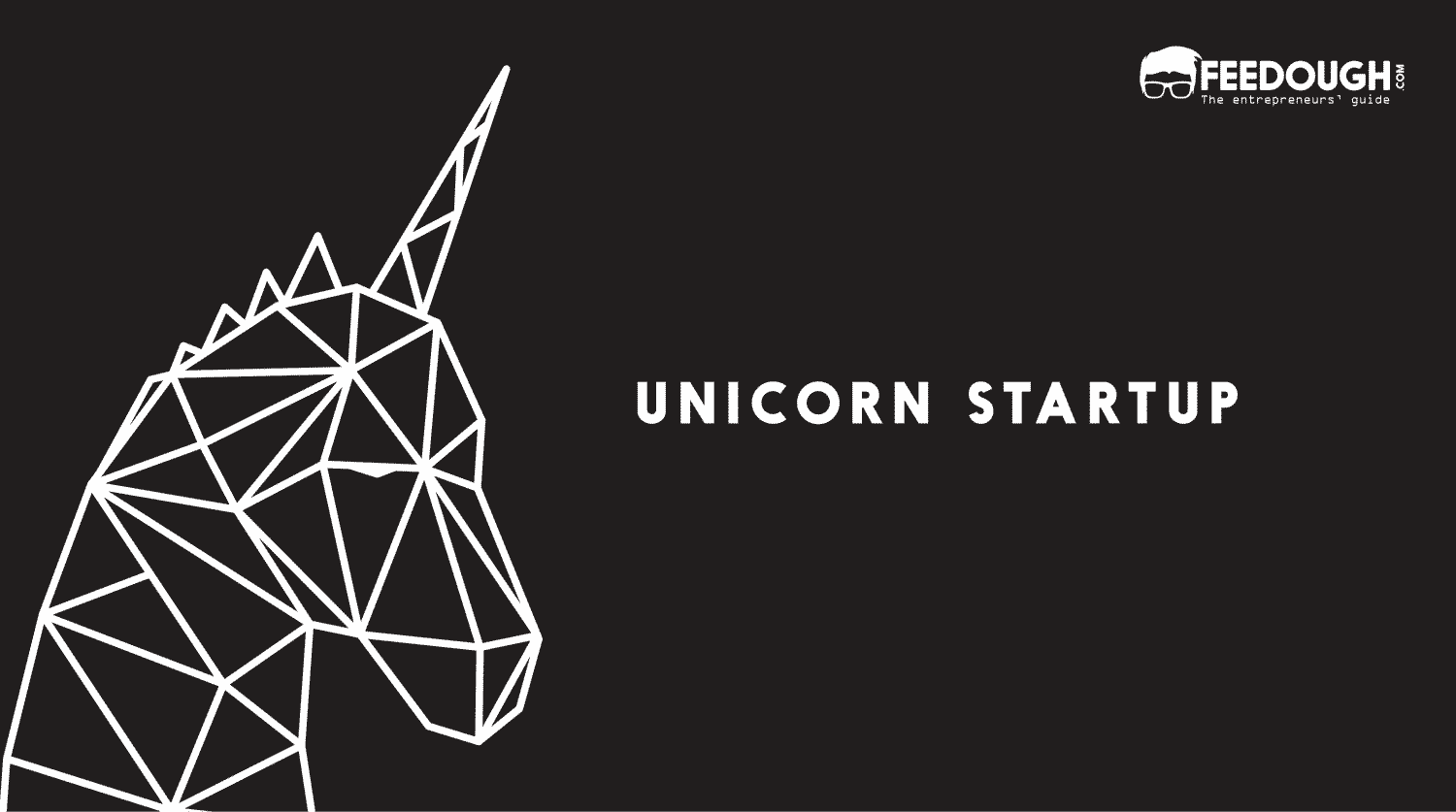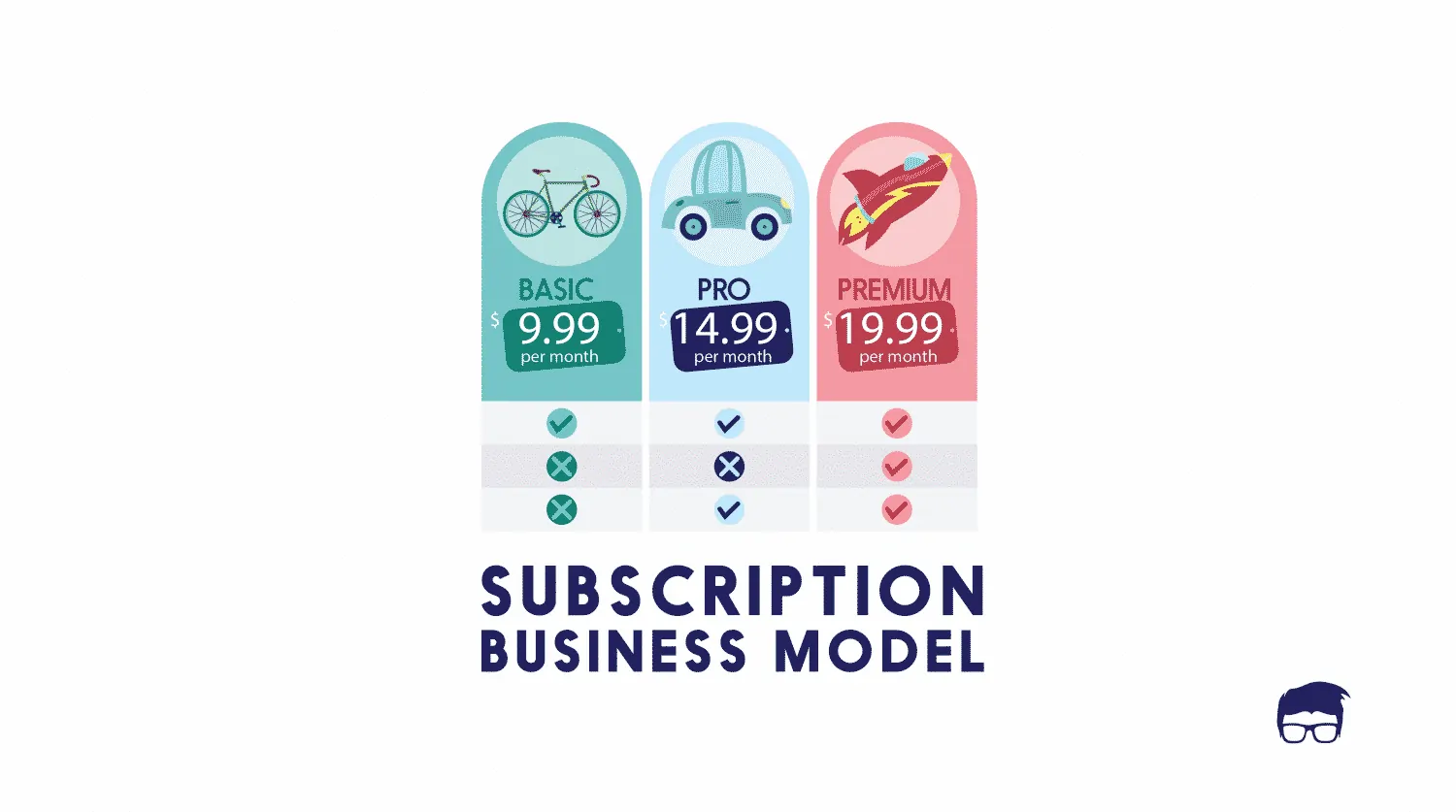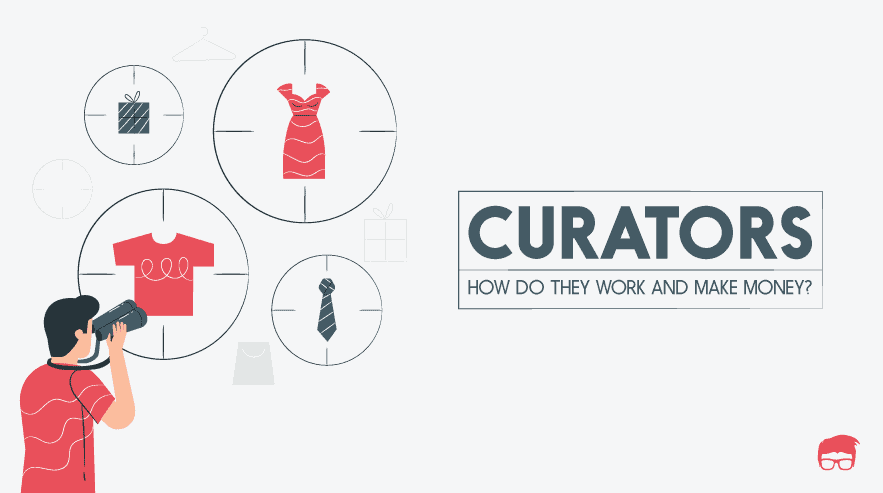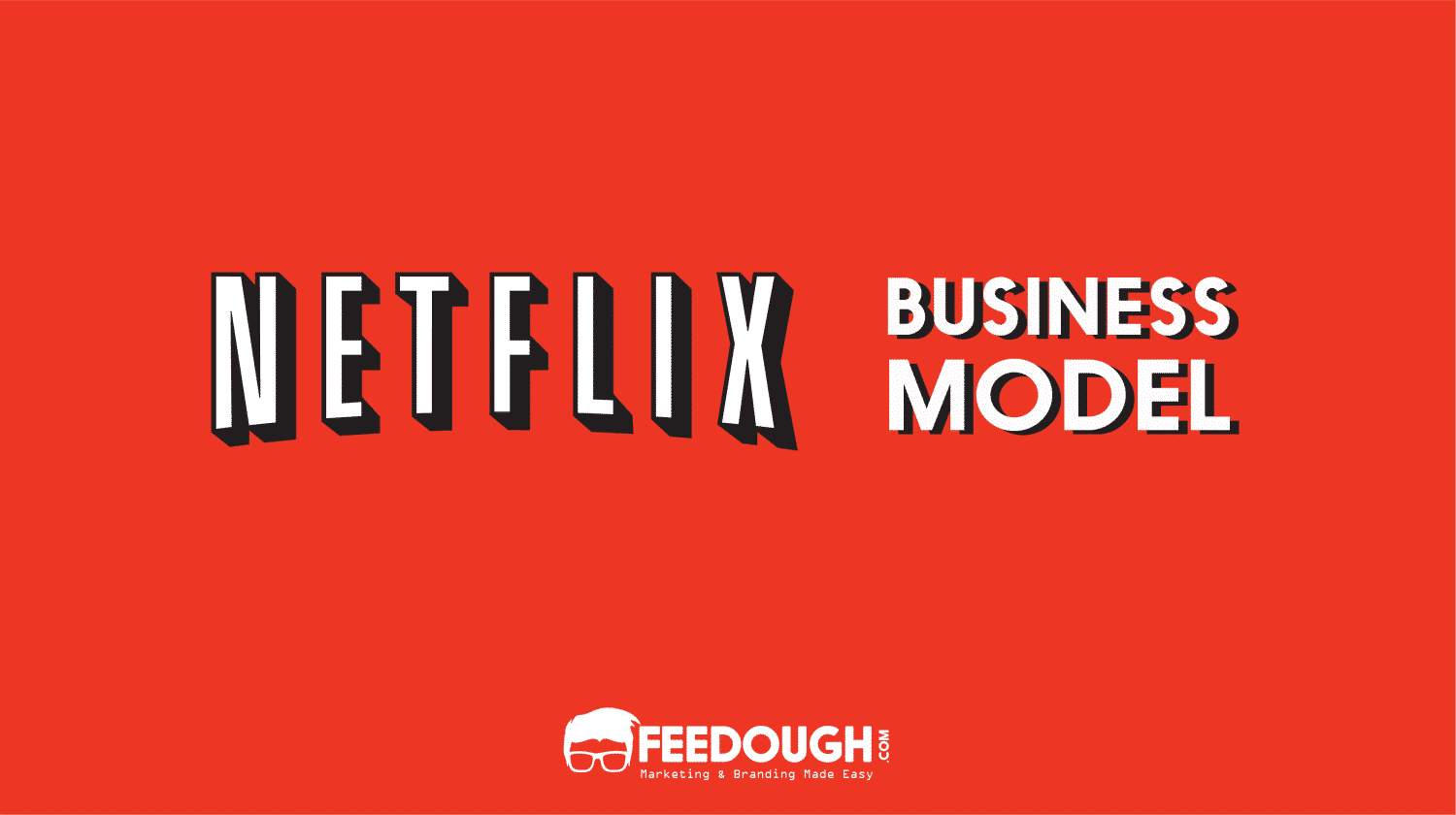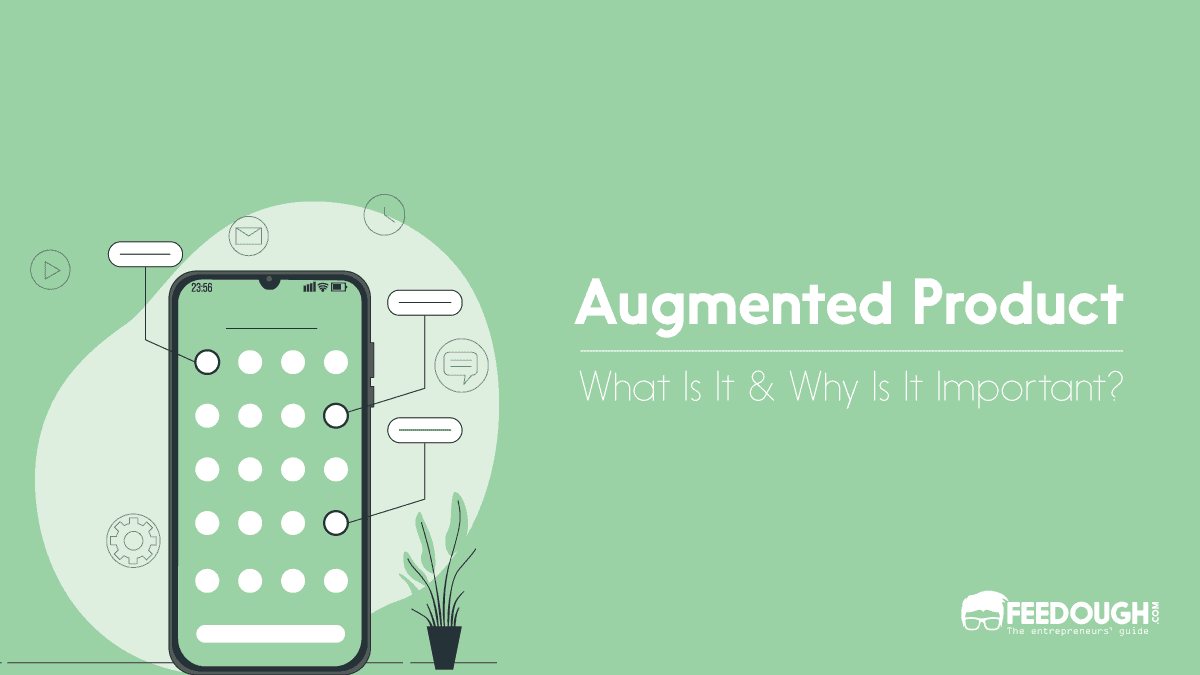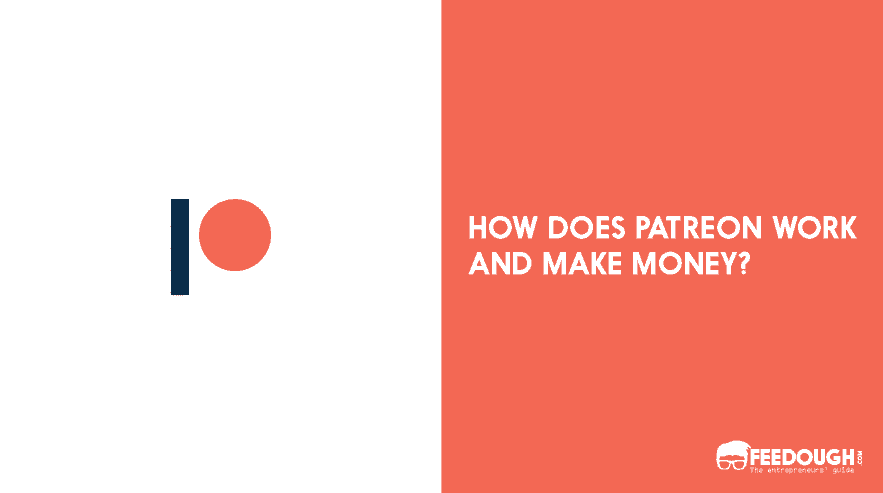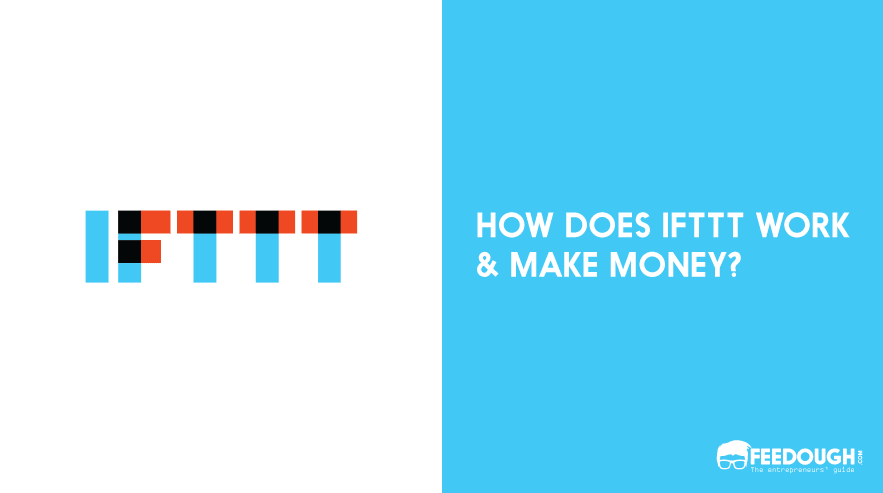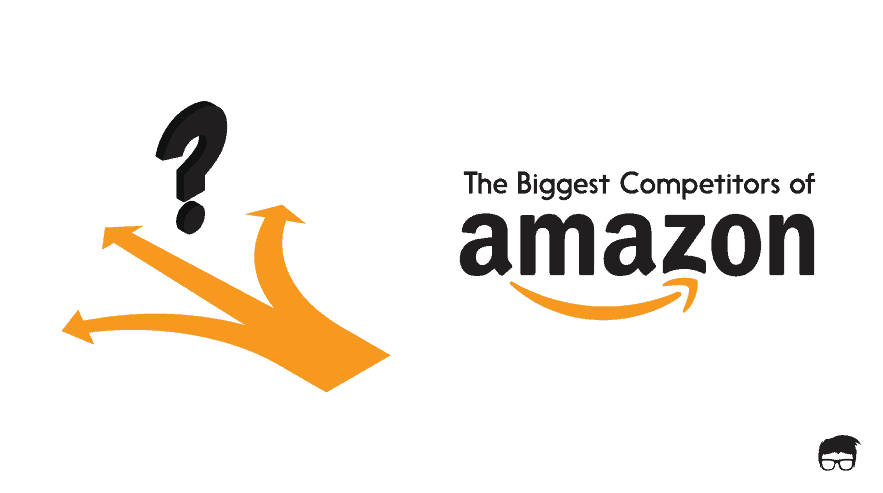When talking about online music streaming, one cannot ignore the contributions of Spotify to the music industry. It has attracted millions of subscribers to try and pay for the music they listen to, reducing piracy substantially.
A huge library of tracks, a great experience across all connected devices, playlist creation tools, and befitting personalised recommendations make Spotify stand out and give it a monthly active user base of 381 million.
With availability in more than 170 countries at the moment, the Spotify business model has the upper hand over many others because of the significant number of features provided and delivery of music with no delay.
What Is Spotify?
Spotify is a digital platform that provides online audio and video streaming service with content from record labels, media companies, and creators across the globe. It makes recommendations with music, podcast, and video content available to its users for free and add-ons through its premium subscriptions.
The platform allows users to build their profiles, select their favourite artists, discover a huge catalogue of music and podcasts, create and share personalised playlists and even host their podcasts for free.
Having connected music lovers and fans with the upbeat latest music, Spotify has commenced a journey of musical discovery on a scale like never before. Let us understand how Spotify works? What does it offer to its customers? And how does it make money?
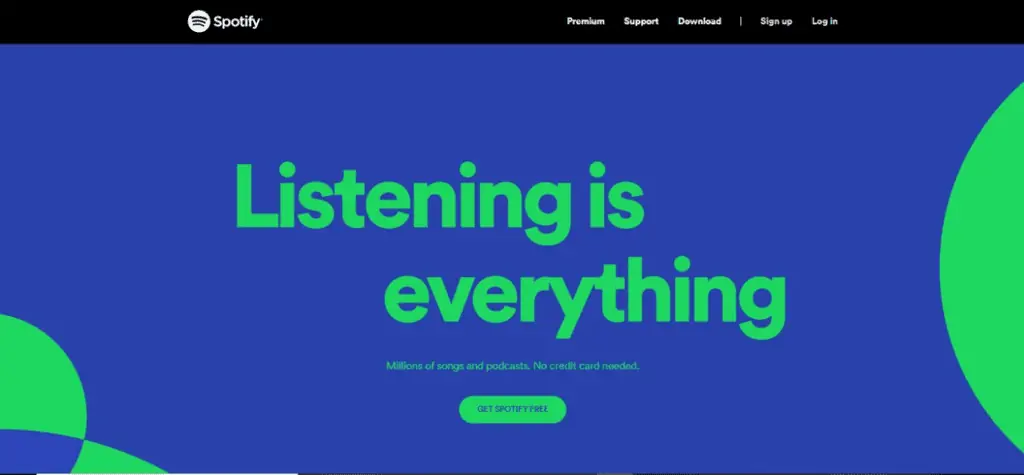
Spotify’s Target Audience
Based on the purpose of usage, Spotify targets listeners, advertisers, and content creators.
Users are the exclusive audience for Spotify; they are the listeners and viewers of the labelled and original content available on the platform.
Advertisers may be free or premium users, agencies, educational institutions, brands or businesses that use the platform to reach audiences and fulfil their objectives.
Content creators are the podcasters and artists that create original content and air it online through the platform.
The Swedish on-demand audio streaming service caters majorly to students and young professionals.
According to Statista, young professionals aged 25-34 contribute to the most significant user segment of Spotify, seconded by the student segment accounting for listeners aged 18-24. Therefore Spotify essentially finds the Gen Z and Millenials a lucrative segment for their offerings. The age demographics can be further explored through the following table:
Age group (years) | Share of Spotify usage |
|---|---|
18-24 | 26% |
25-34 | 29% |
35-44 | 16% |
45-54 | 11% |
55+ | 19% |
As far as gender demographics are concerned, Spotify usage can be attributed to 56% male members and 44% female members.
Geographically speaking, the superpowers dominate worldwide usage, with The United States of America and The United Kingdom heading the list.
Spotify’s Value Proposition
Spotify effectively addresses the pain points of its people and delivers worth to all three target segments, i.e. listeners, advertisers and content creators.
Value Proposition To Listeners
Spotify provides a memorable experience to its listeners and articulates it clearly by providing ‘Music for Everyone.’ It delivers top-notch quality content on the go on various devices. Spotify is the number one online music streaming platform because users can:
High-Quality Music
Spotify tops out at 320kbps audio quality at very high resolution streaming compared to other music streaming counterparts. It provides five other audio streaming options and plans to launch ‘Spotify Hifi’ for lossless audio streaming.
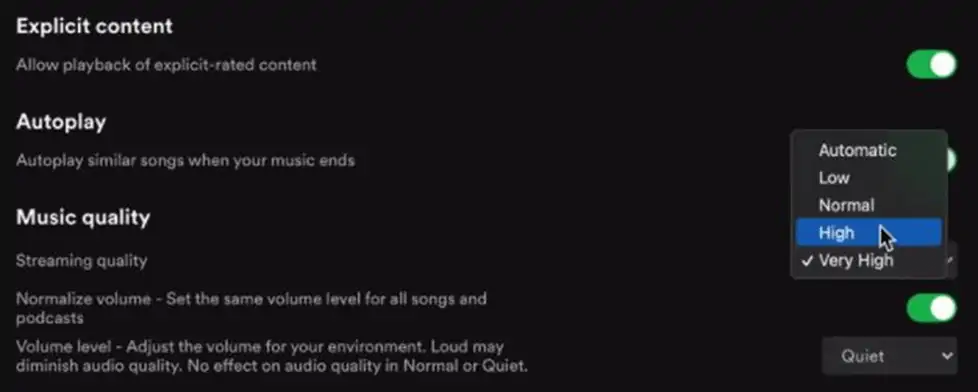
Personalisation
Users can create a personalised profile by dropping their favourite singers, artists, songs, genres and podcasts on Spotify. The platform is designed in a way that it recommends songs suiting the users’ tastes and preferences. Moreover, users can create, share and collaborate with their friends through playlists, making the user experience more personal.
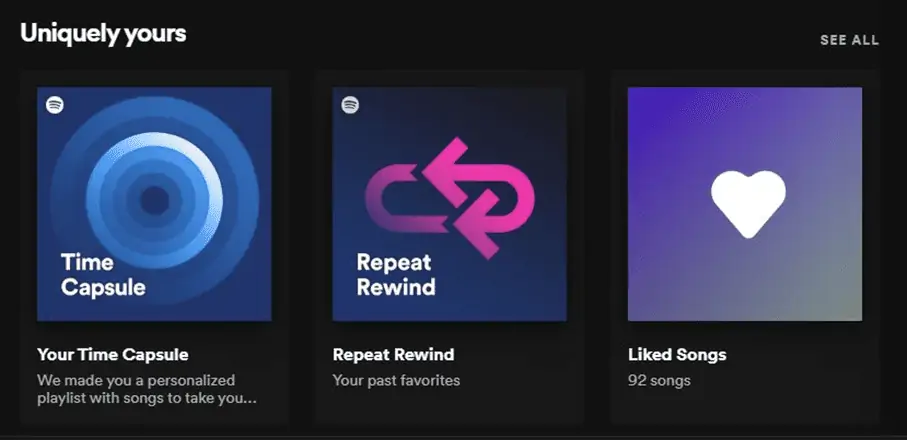
Memorable Experience
Spotify mainly targets students and young professionals, and both these segments are well equipped with technology. Therefore the music platform comes in handy for them through portable devices while working, practising, working out, cooking etc. This is why Spotify becomes more like an overall experience instead of just being a source of entertainment.

Convenient Music Exploration
The user profiles can be managed and operated across various devices hassle-free. The audio-video streaming service can be accessed through smartphones, laptops, speakers, tv, tablets etc. Moreover, the platform allows users to choose from 70 million tracks and 3.2 million podcast titles categorised based on interests, trends, artists etc. Moreover, the platform also enhances the user experience by providing befitting content recommendations by analysing the listener’s activity on the platform.
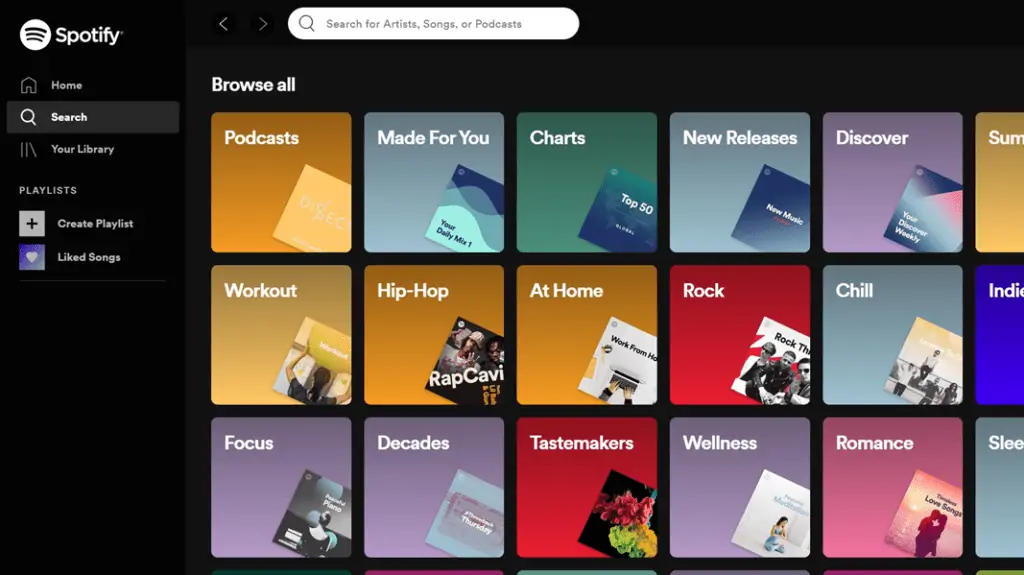
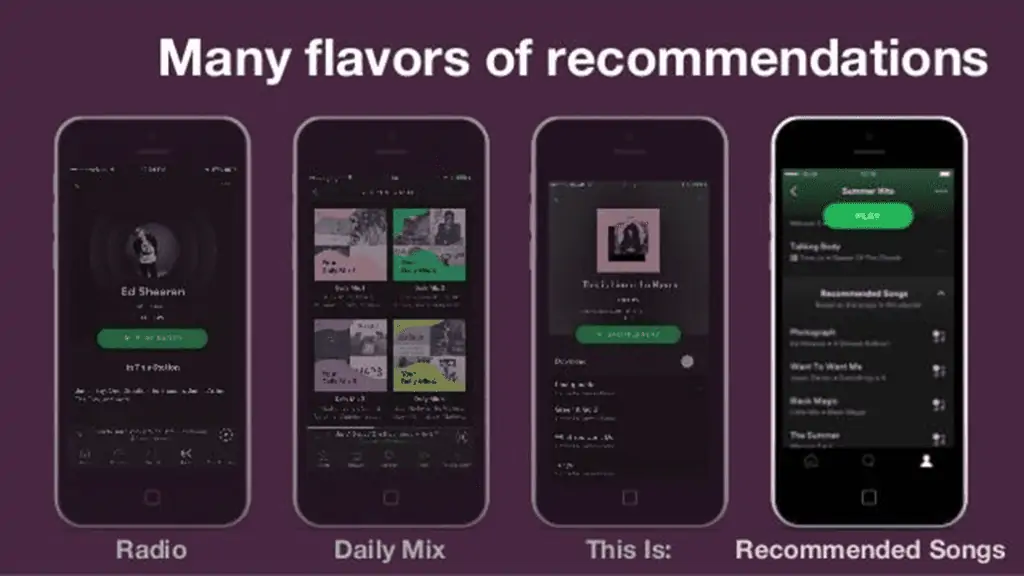
Value Proposition To Advertisers
Spotify hosts a multi-million and diverse user base, making it favourable for advertisers to target their ads and reach their audience. Advertisers rely on Spotify because they can:
Target Ads Effectively
Spotify makes sure that ‘Your audience is listening.’ The audience targeting options on the platform enables advertisers to understand their audience through demographics, device and connectivity, listening behaviours, predicted interests, off-platform behaviours and past interactions. Moreover, even if the campaign objective changes midway, changes to the ad content can be made conveniently.
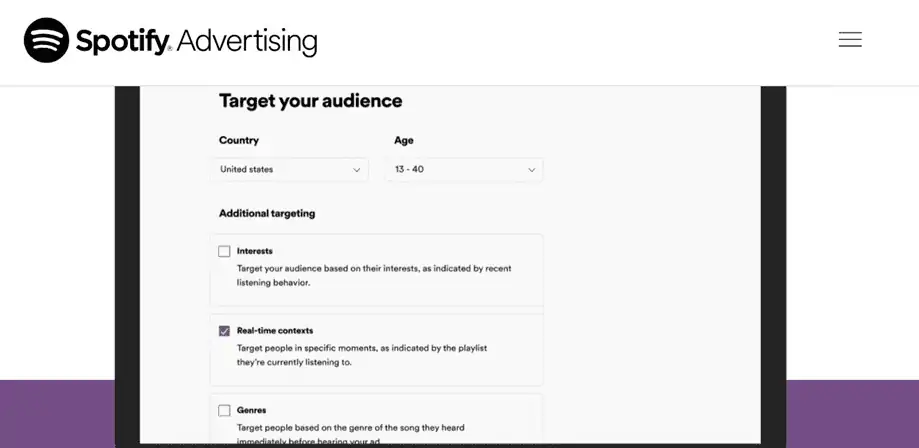
Be Creative
Spotify enables advertisers to harness the power of audio through creative ad campaigns. The Spotify ad studio provides voiceover artists services, setting the ad’s tone and scripting the ad. The platform also employs best practices, tips and tricks to create great ads. In addition, the buzzing strategists, storytellers and makers of Spotify provide their expertise to push the boundaries and achieve goals.
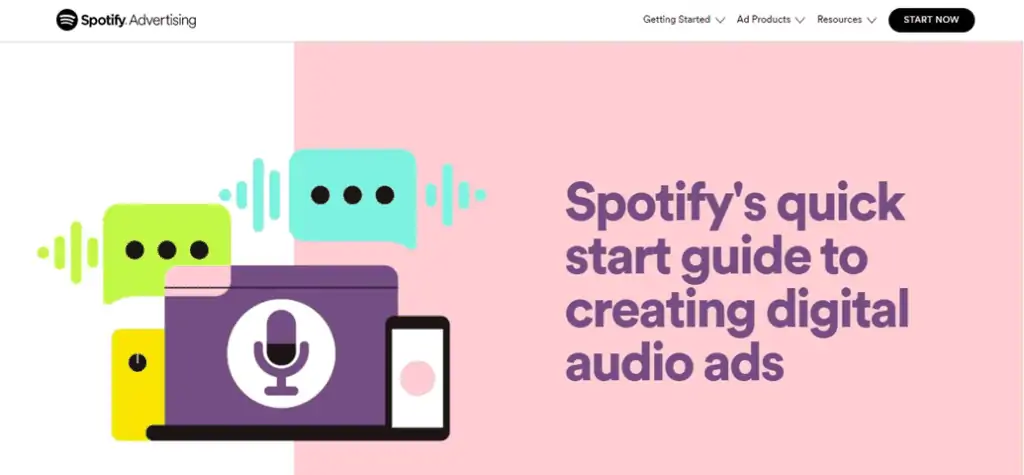
Avail Flexible Pricing
The budget size for advertising on Spotify can be as low as $250 to run an ad campaign. The flexible advertising options, script writing tips, and free tools help create ads from scratch. The cost incurred on advertising can be customised based on the ad format, country and demographic targeted, campaign length, etc.
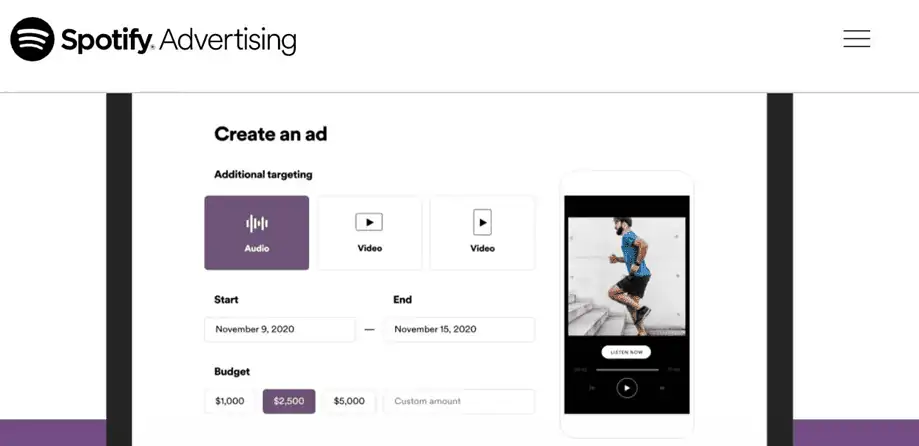
Track The Impact
Spotify evaluates the reach and impact of the ad by campaign reporting through the different audience, performance, ad delivery and conversion metrics. In addition, the platform has partnered with various partners to measure and gauge the reach, resonance and reaction to the ad campaign.
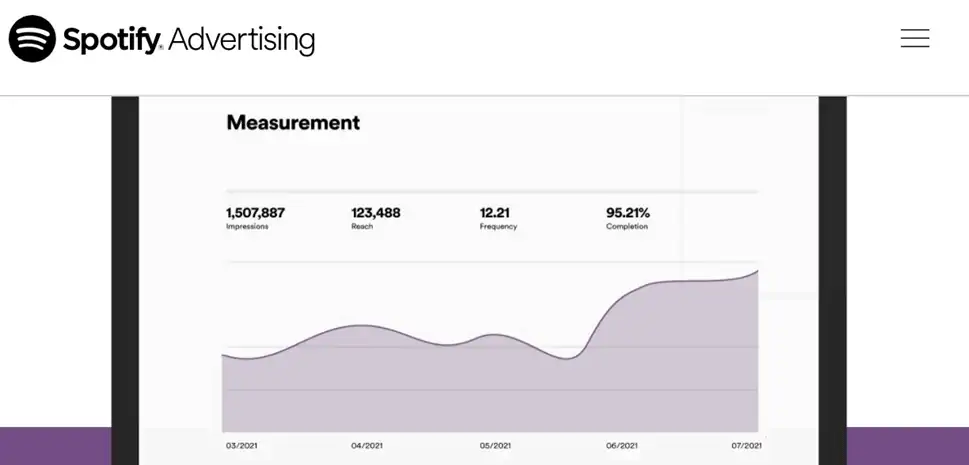
Value Proposition To Content Creators
Creators gain great exposure and branding benefits by using Spotify. Here’s the value they receive from Spotify.
Reach A Vast Audience
Podcasters can harness the 200% increase in podcast listeners from 2019 on year on year basis. Spotify is the second largest place to listen to podcasts and is growing fast; therefore, podcasting on Spotify can gain a maximum audience. Artists can also use the vast user base to develop a fan base and boost their following.
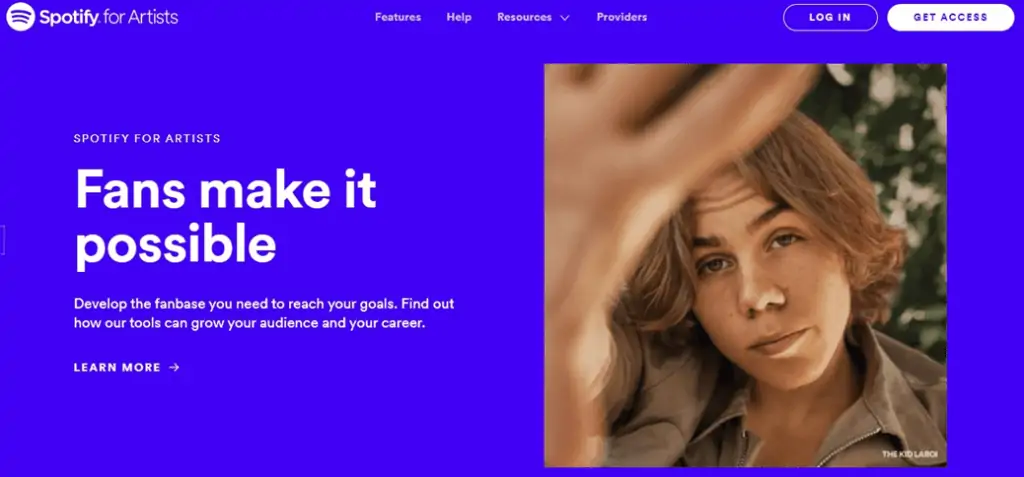
Create An Identity
Spotify aims to unlock the potential of human creativity and allows creative artists and podcasters to go live. Artists can use creative profile tools to add bio, photos, short on loop videos to engage the fans and inspire them. Podcasters are benefitted from editorial and personalised categorisation on the platform and help create their brand identity.
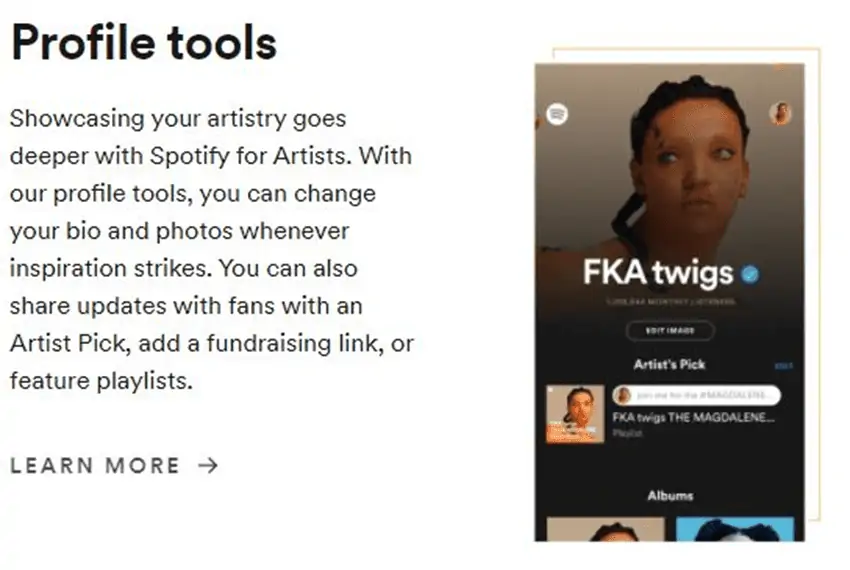
Get Valuable Insights
Spotify reveals real-time stats to provide insights to promote content, discover audience, understand trends, deliver content etc. These insights also help in tracking listeners’ behaviour and discovering the potential audience.
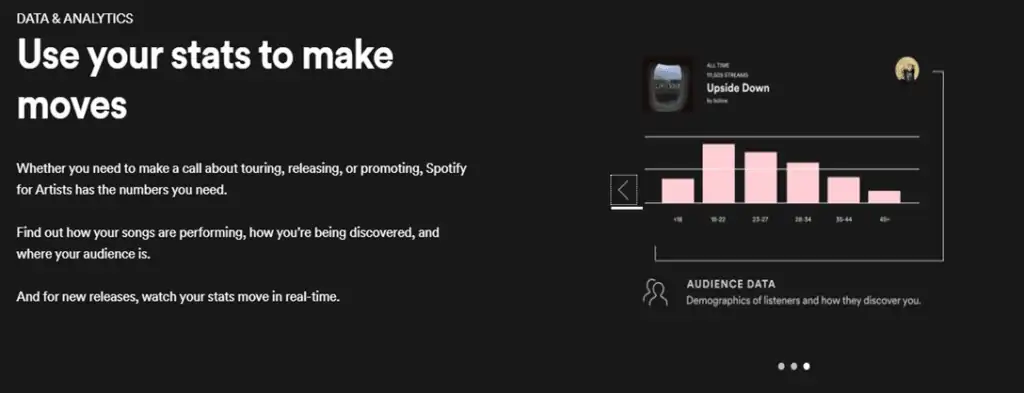
Spotify Business Model
Spotify uses the freemium business model and generates revenue through paid subscriptions and advertisements. Users can choose from paid premium plans that suit the collective number of users and offer discounts. Spotify also provides flexible advertising plans for its advertisers, serving their scale of operations and purpose.
The up-to-date music library, quality of playback, diverse catalogue, personalisation and sharing options create a memorable personal experience for its users. But how does Spotify make all this happen? Let’s dig in to explore the business model closely.
How Does Spotify Operate?
To understand how Spotify works, we need to break down various key factors: elements, activities, partners, channels for reaching out to customers etc.
First, let us understand how the target audience interacts with the platform and performs the key activities.
How Do Listeners Operate Spotify?
Music lovers can enhance their listening experience by streaming on Spotify. They can set up a profile, stream high-quality audio and video content, organise music, share, follow their favourites, and make the platform personalised.
Set-up A Profile
Listeners can download the Spotify application on their devices or sign up online on the browser. The first thing is to set up the profile, and an account can be created using existing Google, Facebook or Apple accounts or using the phone number or a separate email ID. The users then choose their favourites from a range of artists and genres for building their home feed.
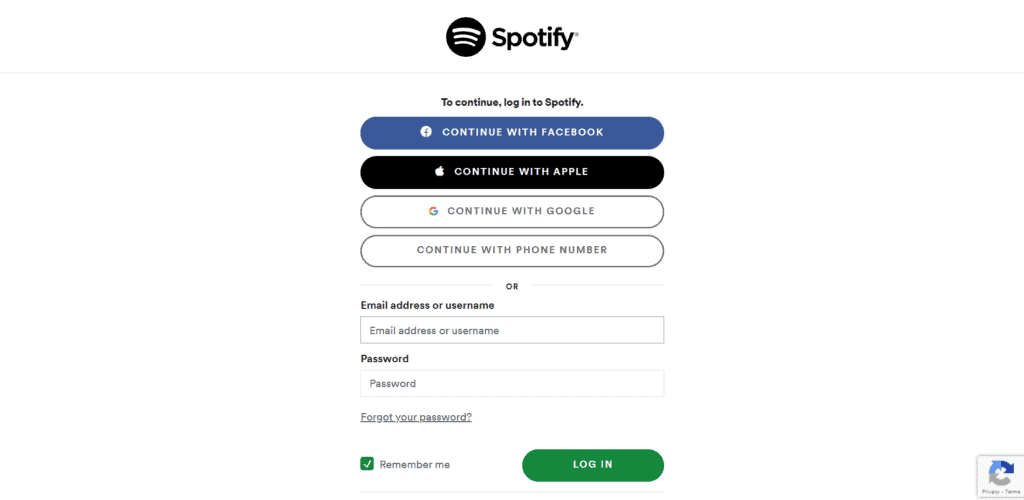
Stream Audio And Video Content
Users can then stream high-quality music and audio and video podcasts, with ads on the free version and ad-free on the premium version. Users have access to tracks from over 5000 genres and sub-genres ranging from indie rock and hip hop to contemporary and classical. The platform also offers a range of podcasts themed educational, thriller, stories, lifestyle and wellness, news and politics, sports etc.
Organise Music
Playlists are the best way to organise music on Spotify. The platform allows users to access self-curated as well as custom-made playlists. Self-made playlists enable users to add their favourite songs and categorise them according to genres in different playlists. In comparison, tailored playlists are those generated by the platform by tracking the user’s listening activity. Daily mix, weekly discovers, and the time capsule are some unique custom playlists curated by the platform for its users. Making collaborative playlists with friends is another exciting feature on Spotify.
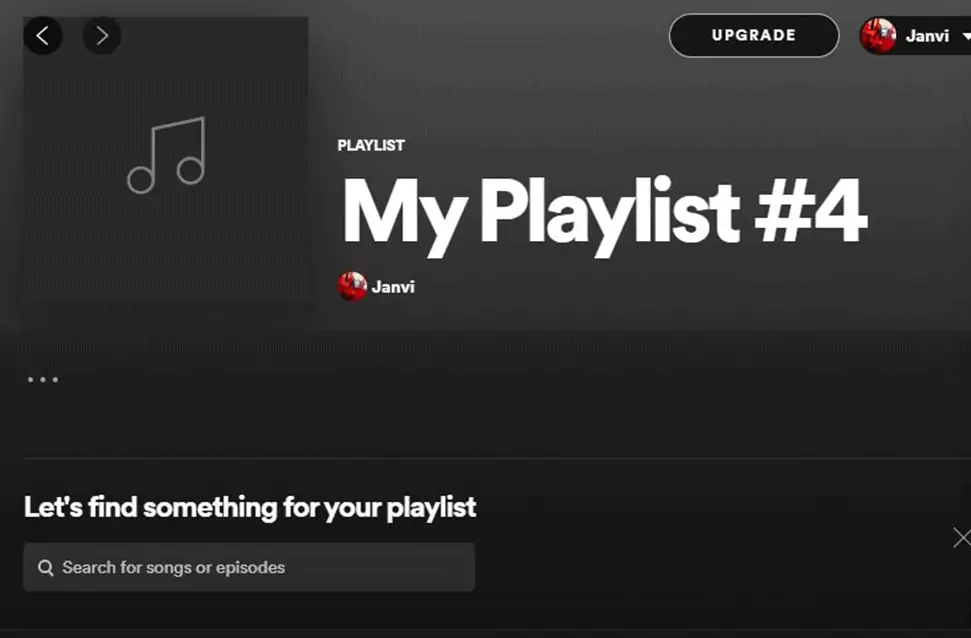
Spotify codes is another way in which the platform redefines user experience. QR codes found on different billboards, posters, and flyers can be scanned through device cameras. The codes have embedded links that redirect to the album or track on the platform within seconds. These codes are also used for sharing songs, playlists and albums among friends and family.
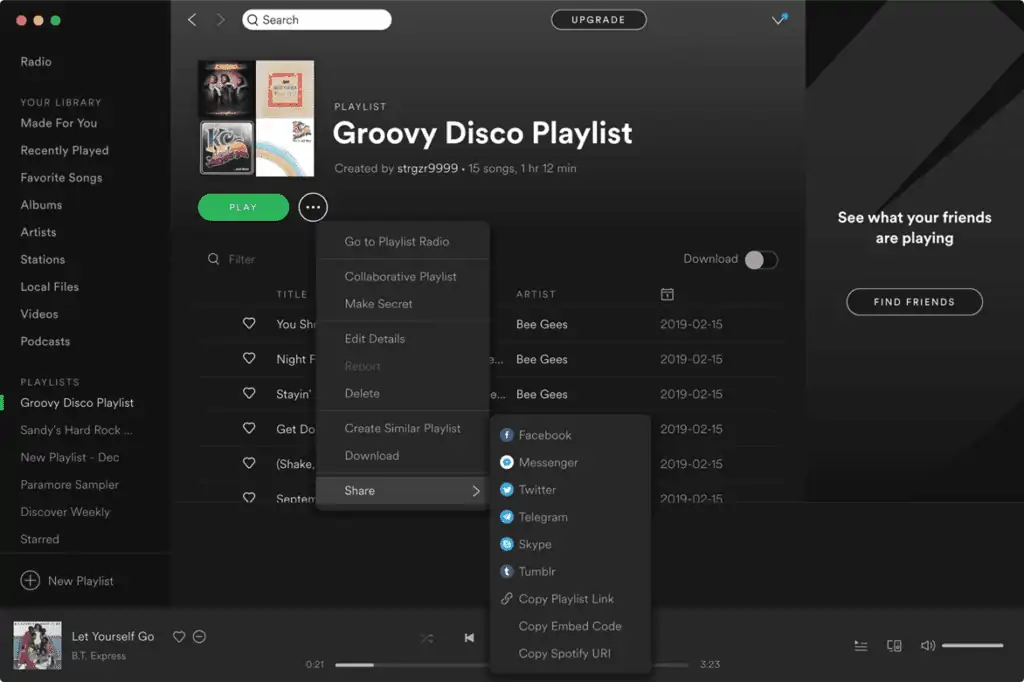
Follow Favourites
Users can also follow their favourite music bands, artists and podcasters and get exclusive notifications of new releases or trending content from this following list. Besides, the ‘Find Friends’ option helps users search and follow their friends’ profiles and expand their listening ambit.
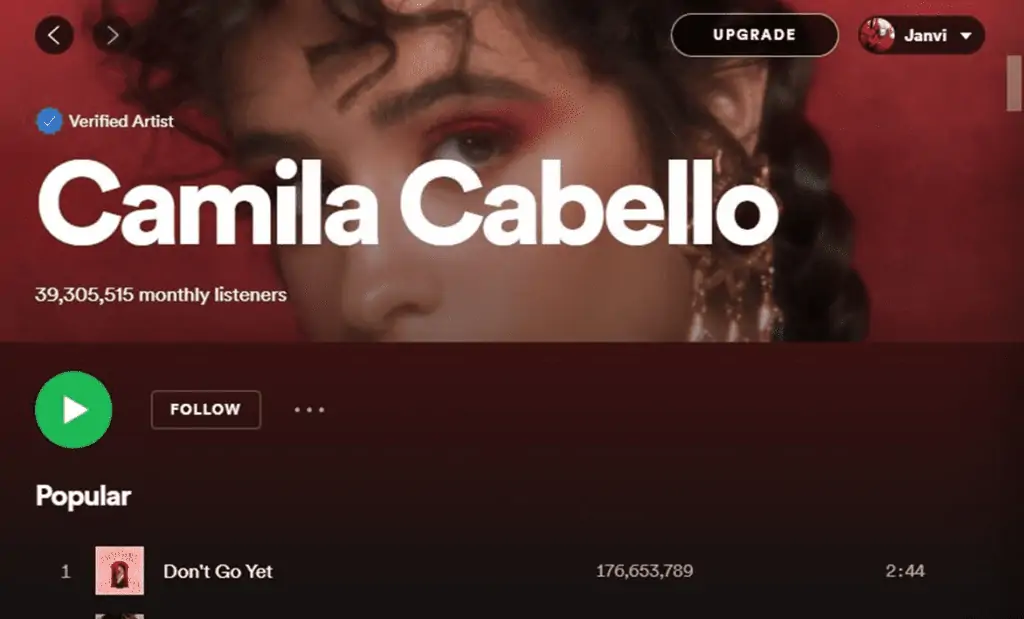
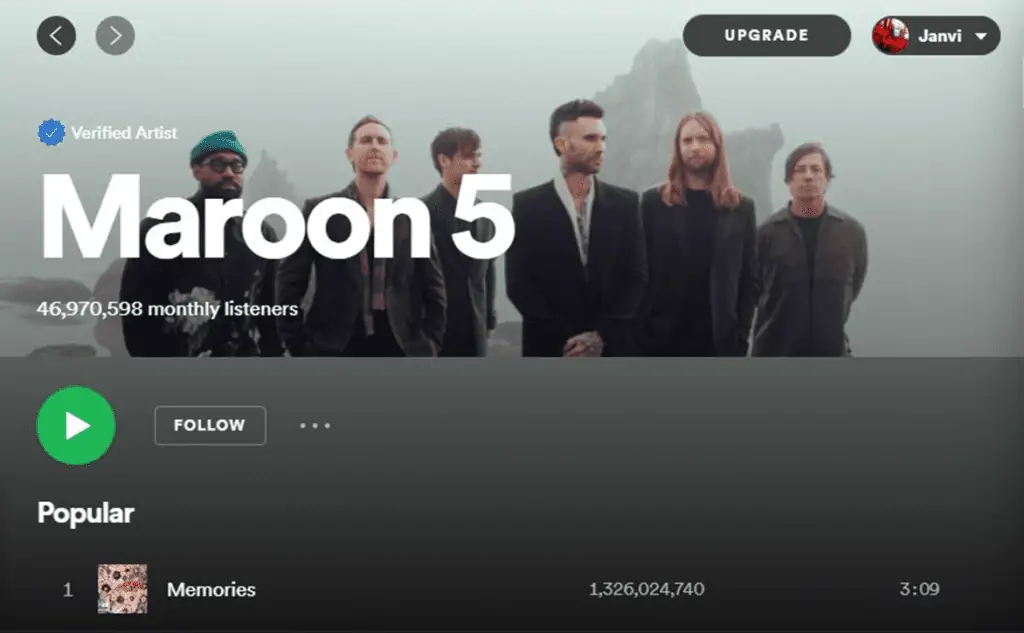
Make It Personal
To make the experience personal to the user, the platform allows users to customise their home feed by exploring the radio option to explore similar songs and artists, listening on a private session, sorting the search bar etc.
The platform enables users to connect and operate across different devices and enjoy their music their way.
Spotify Library is another striking feature of Spotify. It is like a personalised app within the platform, and its users add everything to it. They can efficiently manage their playlists, liked songs, followed artists, podcasts and albums without spending much time scrolling the feed and searching for themes or songs.
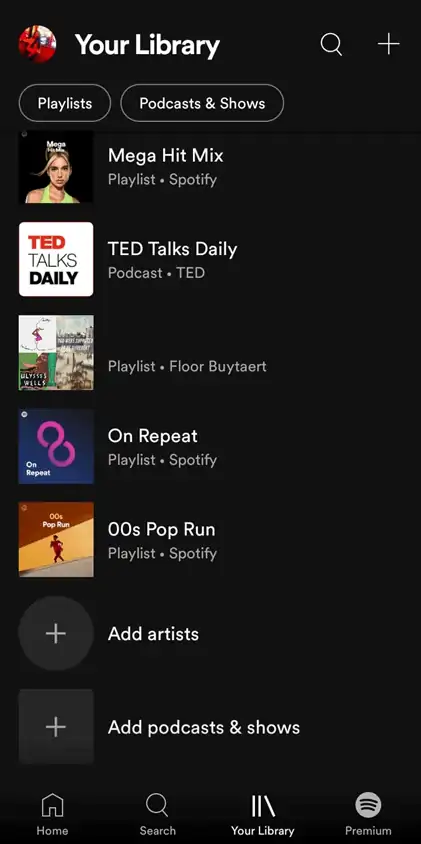
How Do Advertisers Operate Spotify?
Advertisers can harness Spotify’s creative advertising tools and practices to enhance their reach and gain exposure. They can set up an account on Spotify ad studio, find their target audience, create audio and video ads and measure their impact on the audience.
Set-up An Account
Businesses, brands, agencies, educational institutions etc., need to have a Spotify account to run ads on Spotify.
Advertisers can sign up for a Spotify account for free using their business emails or existing accounts to sign up and log in to the Spotify ad studio. Spotify ad studio is a self-serve platform that helps advertisers reach their listeners on Spotify.
Suppose the business is based in countries like the UK, Spain, Australia, New Zealand, or Mexico. In that case, Spotify also verifies the VAT or any other tax identification number of the said business to set up its account on ad studio.
Find The Target Audience
Spotify helps advertisers to reach and engage with their listeners across devices, moments and formats so that the message to be delivered:
- Is tailored according to the listeners’ interest
- Is a part of the listeners’ experience
- Is relevant and targets the listener in real-time
The platform offers various audience targeting options to the advertisers to filter and sort out the relevant listeners. The key options can be classified based on:
- Demographics: It helps the advertiser reach the listener based on who they are or where they belong. Age, gender and location are the key parameters here.
- Device and Connectivity: It helps the advertiser reach the listener across various devices to become a part of their day-to-day moments and experiences. Automotive, connected home, platform, mobile/device, Xbox etc., are some modes that define customer experiences and their reach.
- Listening Behaviours: It helps the advertiser reach the listener based on their musical interests through advanced analysis. A study about the genres, sub-genres, playlist, and podcast categories gives a glimpse of a person’s interests and helps direct ads.
- Predicted Interests: It helps the advertiser reach the listener based on Spotify’s intelligence of predicting close interests of the users. These predictions are made according to the user’s activity on the platform and the general behaviour of people with similar tastes on the platform.
- Off-platform Targeting: It helps the advertiser reach the listeners based on how they behave off the Spotify platform. What a listener browses for and spends time on, custom audience match, third-party targeting, etc., enhances the reach.
- Past Interactions: It helps the advertiser reach the listeners based on how they interacted with digital ads in the past on the platform. Brand exposure, sequential messaging, real-time retargeting etc., come to play.
Create An Advertisement
Spotify’s creative free services make it easy to create professional audio ads in a few minutes. Although, advertisers can also upload their pre-prepared files as well for airing on the platform.
People listen to Spotify everywhere—in the car, gym, office, or even shower. Therefore the platform offers different ad formats to suit the listeners’ as well as advertisers.
Audio ads air between songs and get the maximum attention of the listeners throughout the day.
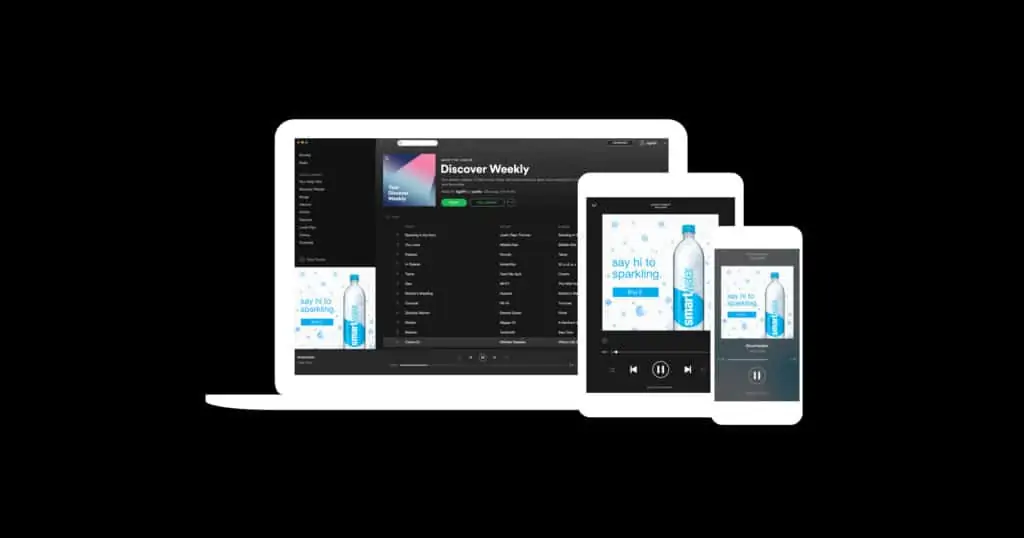
Video ads air only when the listener actively browses the content catalogue on Spotify, guaranteeing the content will be seen and heard.
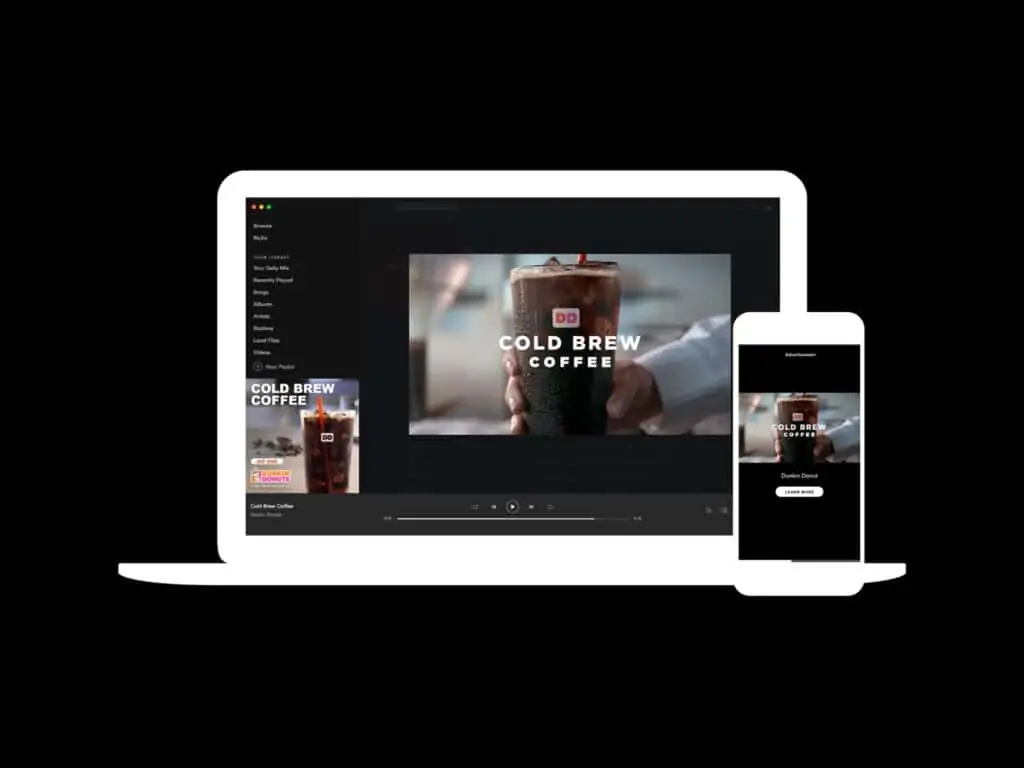
Podcast ads air during the listening session and tell the brand’s story. They impact emotions and generate engagements from the listeners.
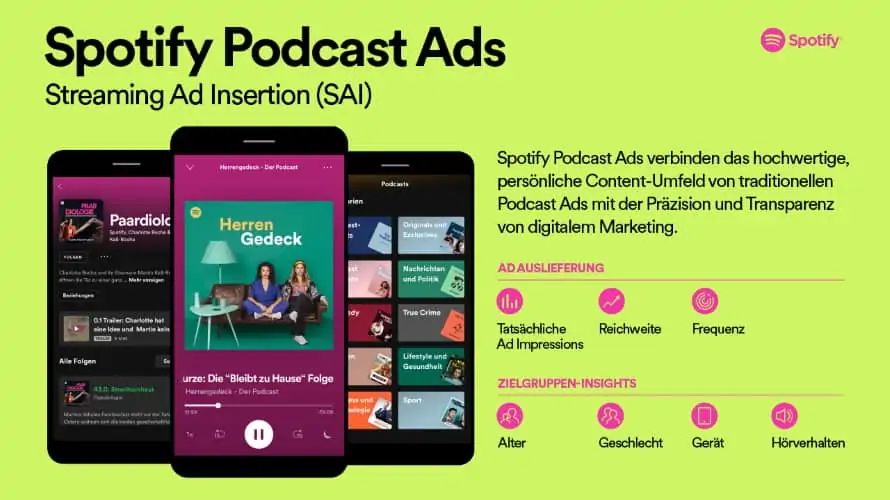
Multi-Format ads are tailored according to the needs of the business and help gain reach through multiple ad formats.
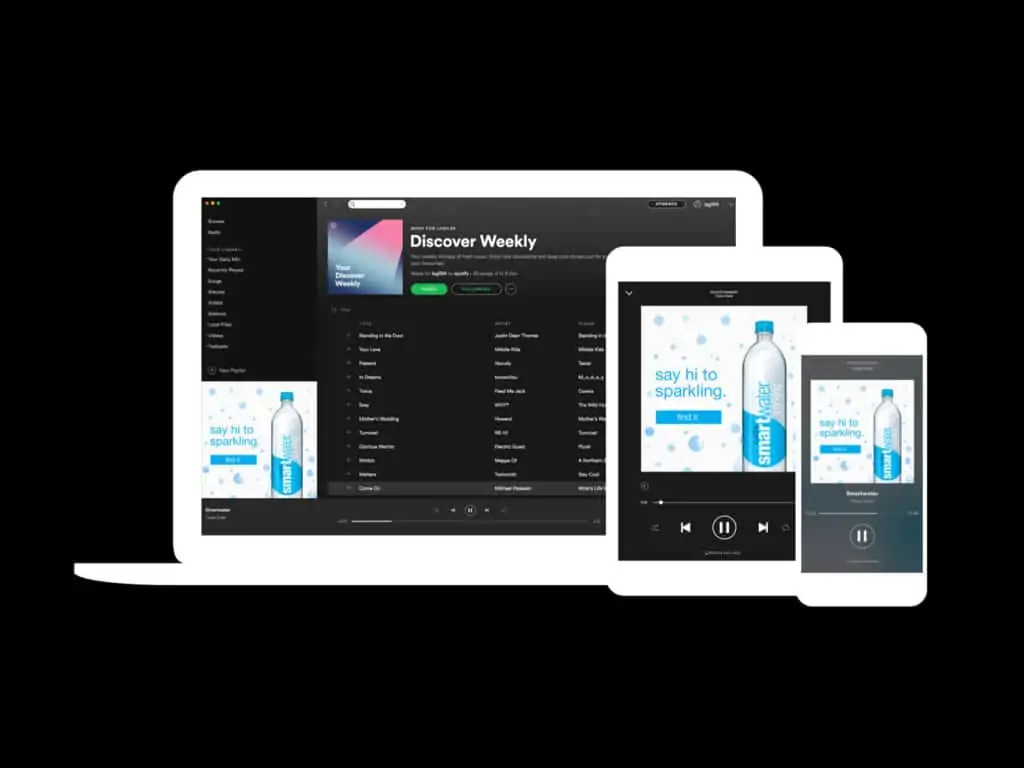
Moreover, the platform offers free tools, tips, tricks and best practices, a step-by-step guide to building an ad from scratch.
Measure Impact
Advertising on Spotify has an added advantage because it can measure and represent the efficiency of an ad in numbers. These numbers are like metrics that indicate an ad’s impact on its audience.
The metrics can be categorised as ad delivery, performance, audience, and streaming conversion metrics. These indicators are computed after analysing the ads served, reach, clicks, genres, age, average stream per listener etc.
In addition, the Spotify reporting partners provide expertise to measure the reach, resonance and reaction to ads and further ease the critical aspect of advertising online.
Who Are Spotify’s Key Partners?
Spotify has built some strong relationships with people and businesses that make its business operations effective. These partners take care of the aspects that the company cannot take care of.
Music Partners
Spotify has partnered with the big music labels and media houses to acquire the streaming rights of their content on its platform. Spotify users can listen to trending new releases and classic tracks from those labels in a few clicks on the Spotify platform. E.g., Universal Music group, Sony Music Entertainment Group and Warner Music Group are some of Spotify’s music partners.
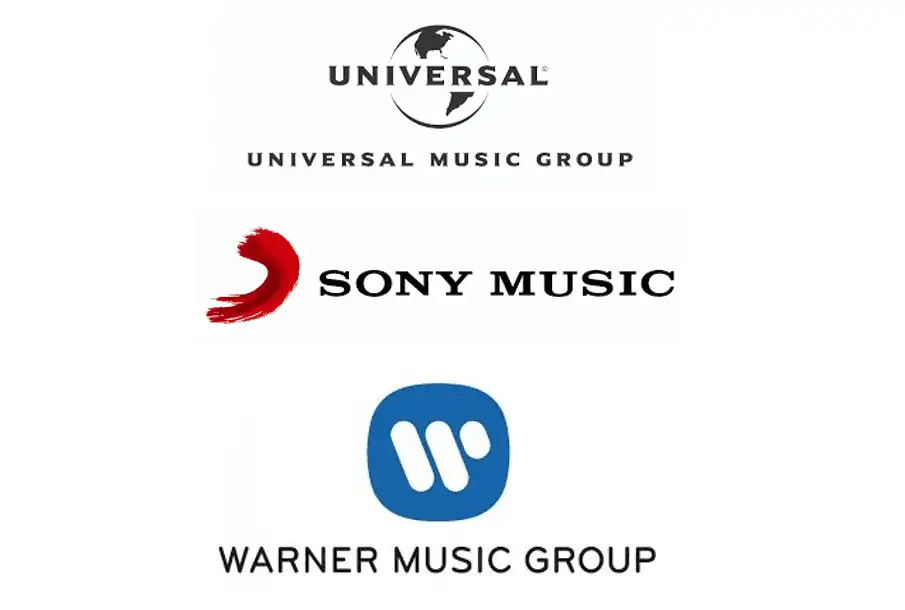
Campaign Reporting Partners
Spotify has partnered with some leading reporting partners to measure the impact of the ad campaigns aired by the advertisers on the platform. They essentially help in measuring the reach, resonance and response generated by a particular ad on Spotify. E.g., Nielsen, Comscore, Leanlab are some campaign reporting partners of Spotify.
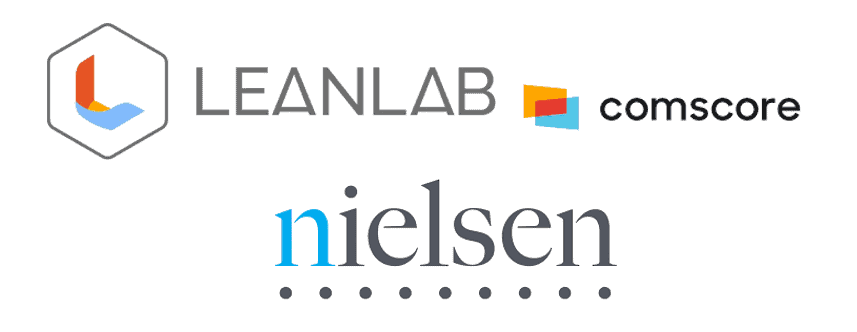
Artist Distribution Partners
Spotify has partnered with some artists distributor partners that help the artists to their music on the platform. They help to license and distribute their tracks on Spotify. These brand providers offer instant access to Spotify for Artists and thereby pay royalties to artists. E.g., Distrokid, CD Baby, Amuse are some artist distributor partners of Spotify.
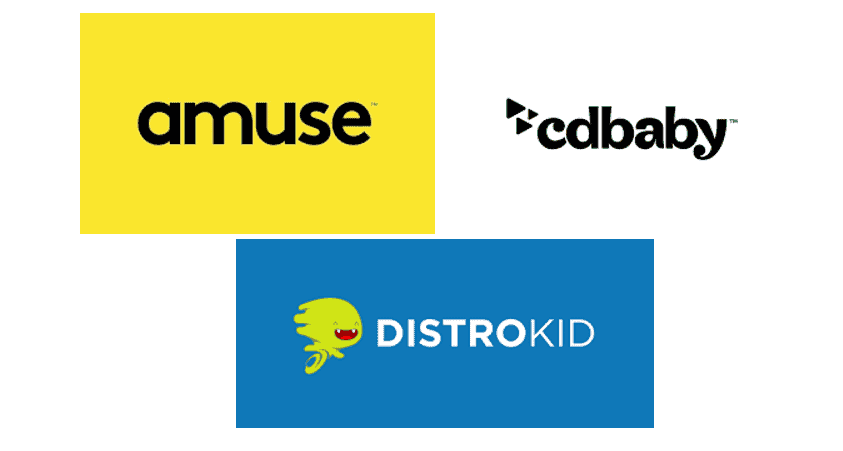
Label Distribution Partners
Spotify has partnered with label distributors that allow artists to collaborate with a label and air their recordings on Spotify. These providers take care of the licensing and distribution and pay royalties due to the artists. E.g., The Orchard, Believe, FUGA are some label distributors of Spotify.
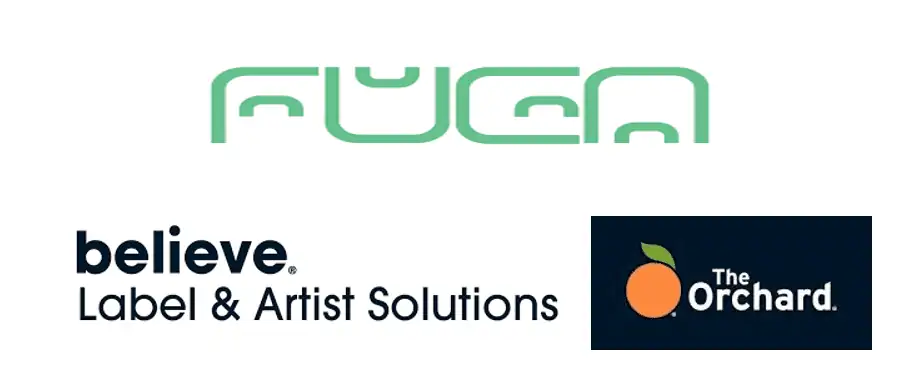
Delivery Partners
Spotify has partnered with ceratin delivery platforms that address the distribution aspect of the recordings. These providers provide artists exclusively with data and insights to understand the audience and accordingly stream their content on relevant platforms. E.g., EMS, AudioSalad, ampsuite are some delivery partners of Spotify.

What Are Spotify’s Key Resources?
Spotify delivers top-notch value to its customers because it uses its valuable assets. These assets are the company resources that are built and nurtured for the growth of the business.
Spotify is an audio-video streaming platform that makes available its services through its application and website. The application and the website have an aesthetic display with orderly categorisation, multiple sharing options, and a diverse content catalogue.
The employees are the human resource at the back of all Spotify operations handling technical, content, and other assets for delivering the value proposition. As of 2020, Spotify’s workforce consists of 6500+ employees across the globe with roles in marketing, research, engineering, finance and administration.
In addition, Spotify’s licensing agreements with the big music labels and rights holders make the business model possible. It has also built its reputation as the leading digital streaming music platform and created a brand name and logo for its identity.
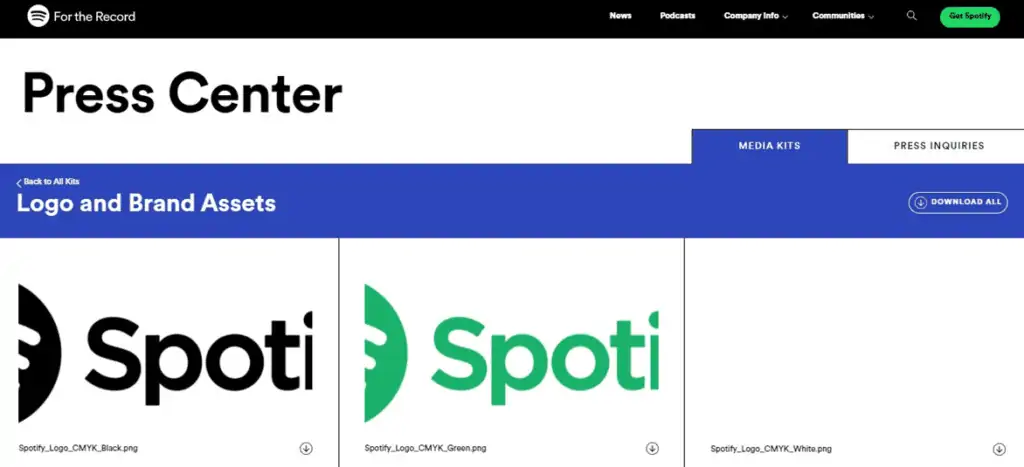
How Does Spotify Reach Its Customers?
Spotify uses specific communication channels to reach out to people, make a presence and provide its services. These key channels offer hassle-free access to the platform.
Website and Application
Users can directly access the platform through a website or application available for both android and ios with connectivity through a range of other devices on the same wifi network. Spotify connect enables this connectivity across speakers, TVs, smartwatches, tablets, PlayStations etc.
The website and app interface are quick and straightforward to learn for beginners as well. The well-organised website in mobile and desktop versions further makes online music streaming simpler.
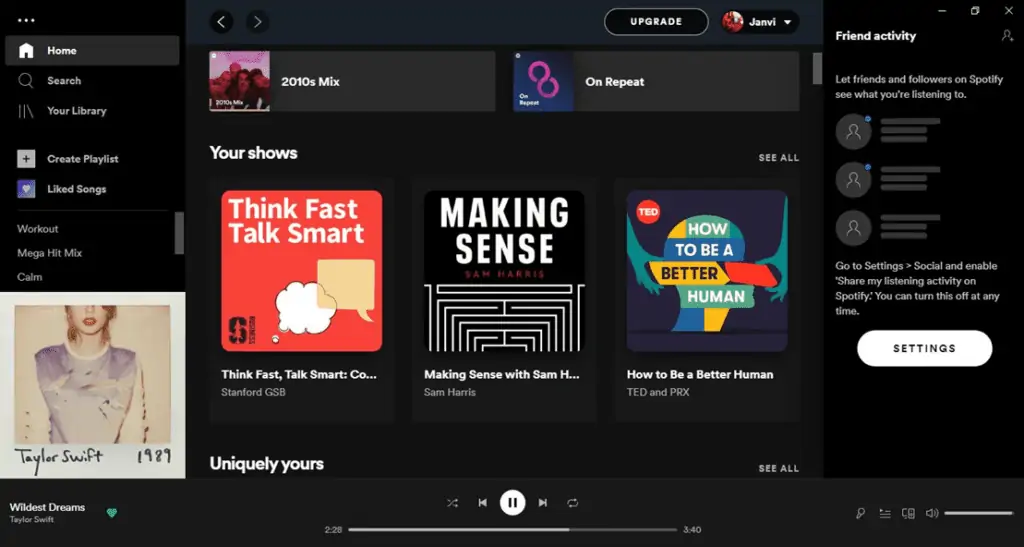
Search Engines And Social Media Platforms
Pinterest can also be accessed through indirect channels as well. Search engines like Google and social media platforms like Instagram are also Spotify’s indirect channels. E.g. Google uses images and hyperlinks sourced from Spotify on their search results, and Spotify allows sharing of tracks and playlists on Instagram stories, among other social platforms. This way, browsers are directly routed to the website. Twitter, Linkedin, Youtube etc., are some other sources that help Pinterest reach its potential users.
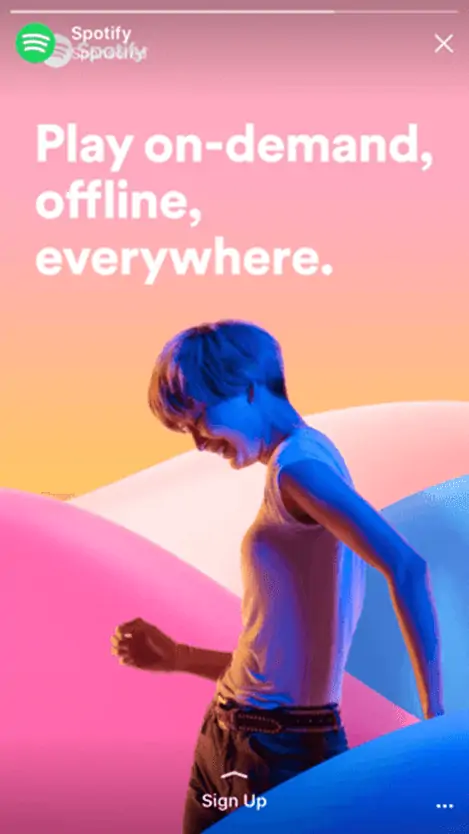
Collaborations
Spotify is also redefining the customer experience through various collaborations with brands. It collaborated with Uber, allowing users to connect to their Spotify accounts and stream their favourite tunes while riding an Uber cab to establish a personal connection. Spotify has made similar collaborations with Starbucks, Hyundai, Co-Cola, SoundHound etc.
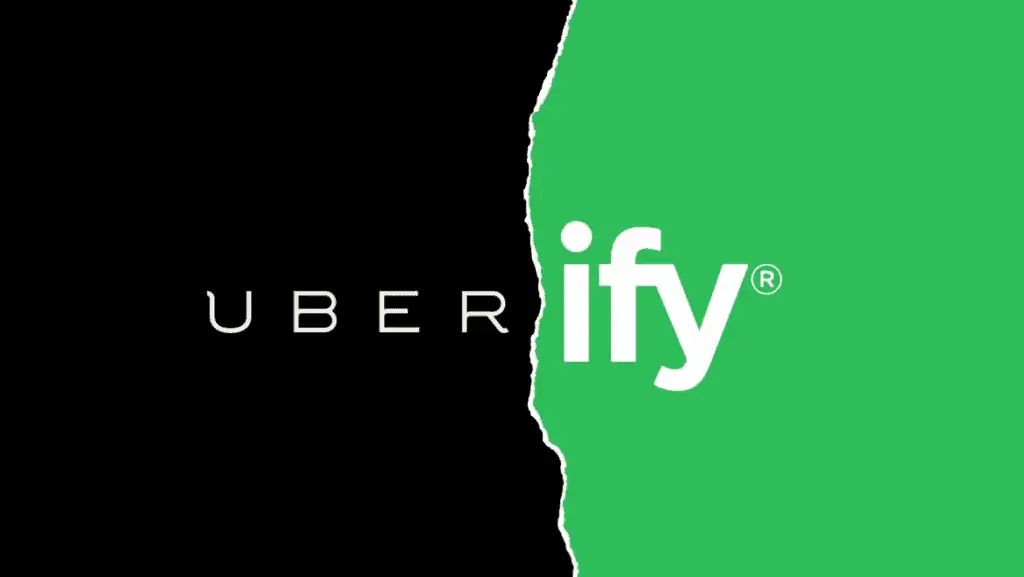
How Does Spotify Make Money?
Spotify reported 172 million premium subscribers worldwide, up from 144 million in the corresponding quarter of 2020. Moreover, according to Statista, its revenues jumped from 1,975 million euros in 2020 in the third quarter to 2,501 million euros in 2021 in the third quarter.
Let’s look into the revenue model of Spotify and understand how it makes money?
Revenue Streams
The revenue model of Spotify can be divided into Revenue from Premium Subscriptions and Revenue from Advertisements.
Revenue from Premium Subscriptions
Spotify’s premium version is ad-free, with users able to play any type of song on demand, discover new music, find and hear playlists, share music and playlists, listen to tunes picked by Spotify’s Radio feature, and create playlists.
The distinguishing features of the Premium version include no ad interruptions, offline playback for saving music offline, play music anywhere across a range of devices and pay your way through flexible payment modes and unlimited skips.
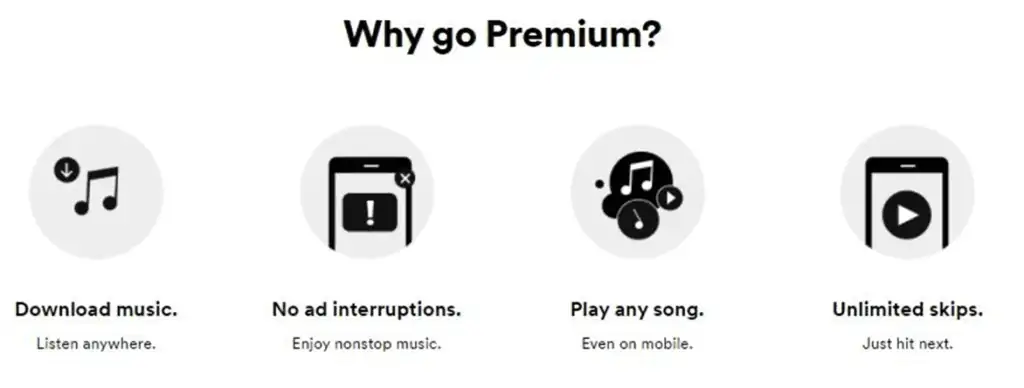
Spotify Premium is available in four different plans to suit the listeners. The plans are for an individual, duo, family and student. The table below specifies the ideal facilities available under the different plans.
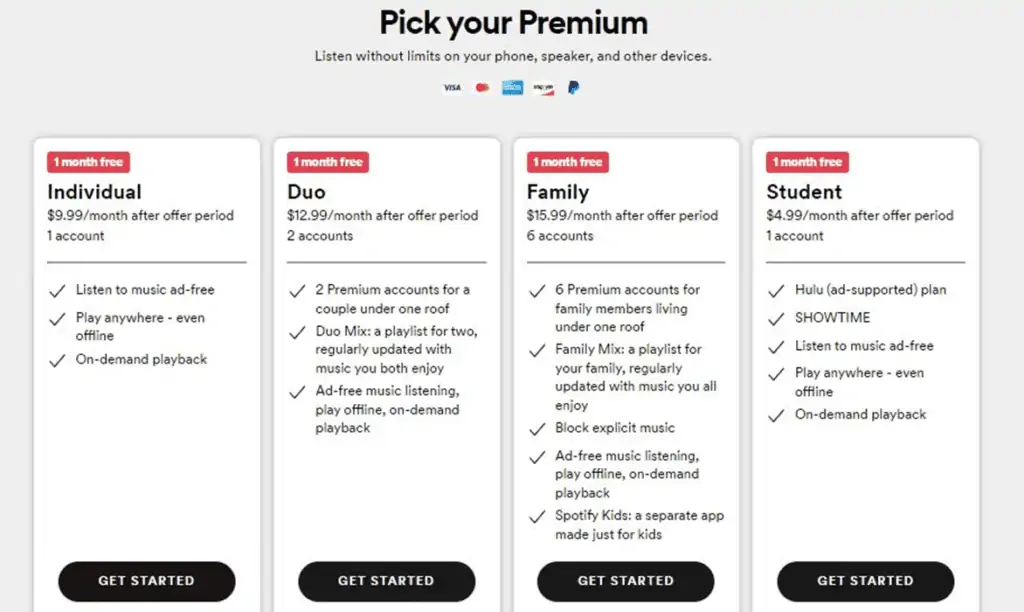
Revenue From Advertisements
Spotify earns revenues from native banner advertisements and uses cutting-edge technology to target its users with audio, video, podcast and multi-format ads.
Spotify supports different kinds of advertisements that vary in type, size and user engagement, and all of these deliver differentiated customer experiences. They can be listed as follows:
Sponsored Playlists are those whereby businesses can align the brand with Spotify and sponsor the most popular playlists on the platform for a week. It builds brand awareness and promotes the brand. They can run on laptops and mobiles.
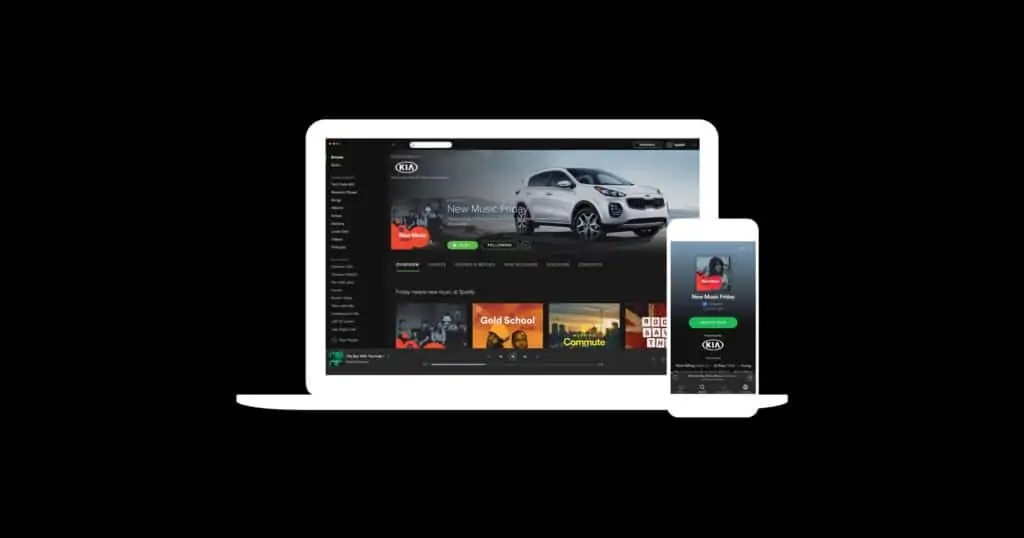
Branded Moments are the vertical video ads that run at the beginning of playlists and, when watched to completion, give listeners 30 minutes of commercial-free streaming. They can run on tablets, mobiles and laptops.
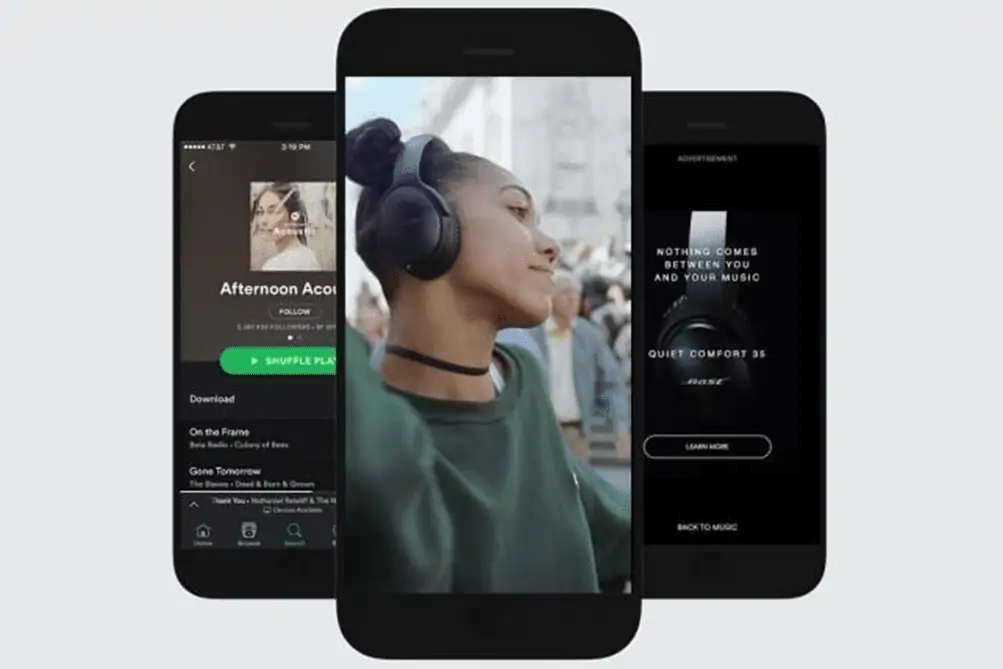
Sponsored Sessions are similar to branded moments because they also precede an uninterrupted listening session for 30 minutes. However, these contain horizontal video format and a banner to display the ad. They can run on mobiles and tablets.
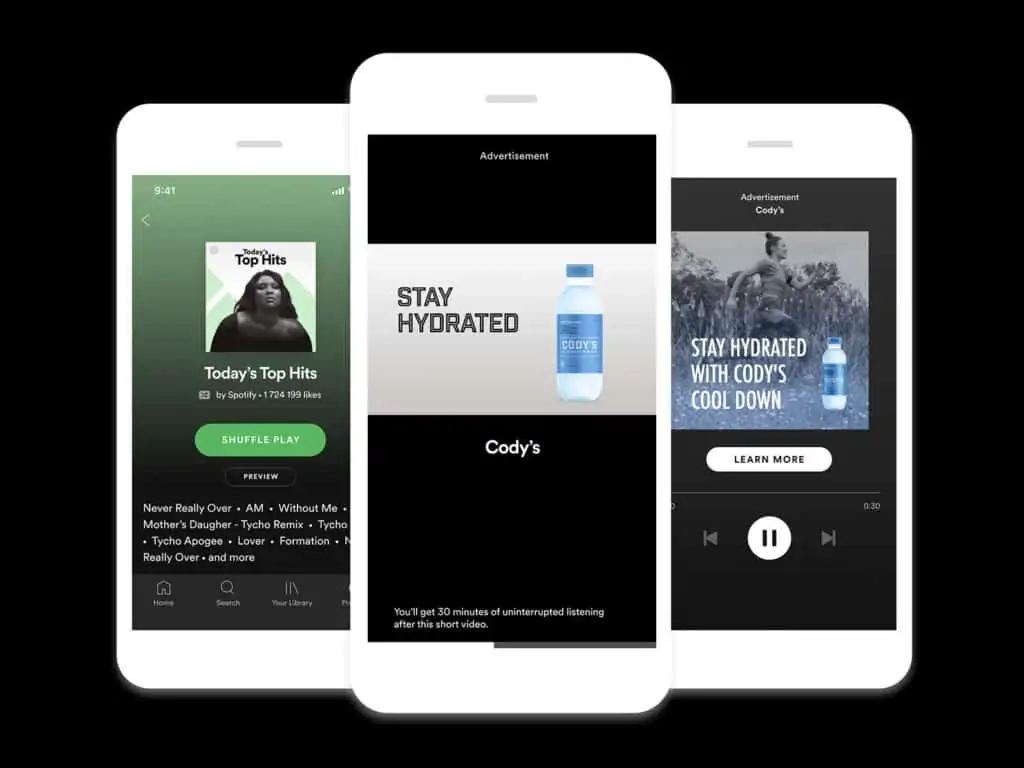
Video Takeovers are delivered during a listening session between songs when users actively browse through the catalogue to enjoy and discover music and podcasts.They run only on laptops.
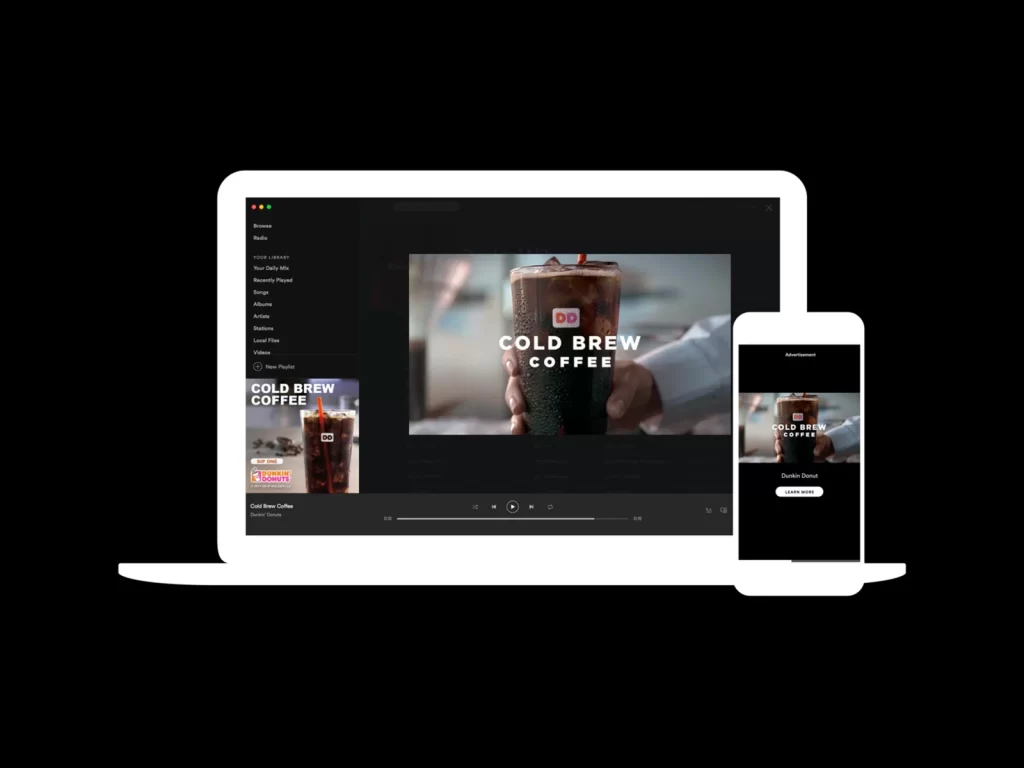
Display ads are clickable banner ads displayed at the bottom for 30 seconds, visible throughout the timespan.
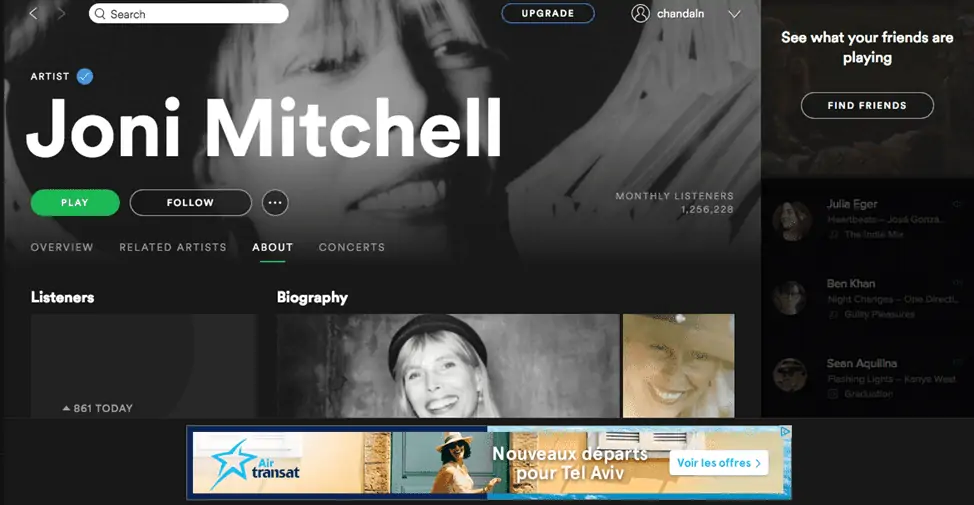
Homepage Takeovers showcase the brand message on the front of Spotify’s Desktop Homepage for 24 hours. This ad format is supported only on laptops.
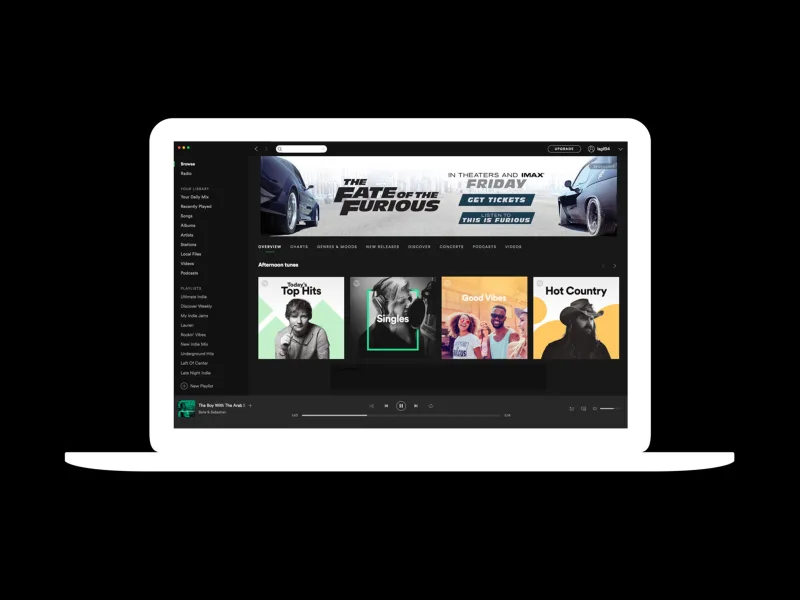
Overlay ad format is delivered when the user returns to the Spotify app for maximum brand impact. This ad acts as a welcome back screen on the platform and engages users.
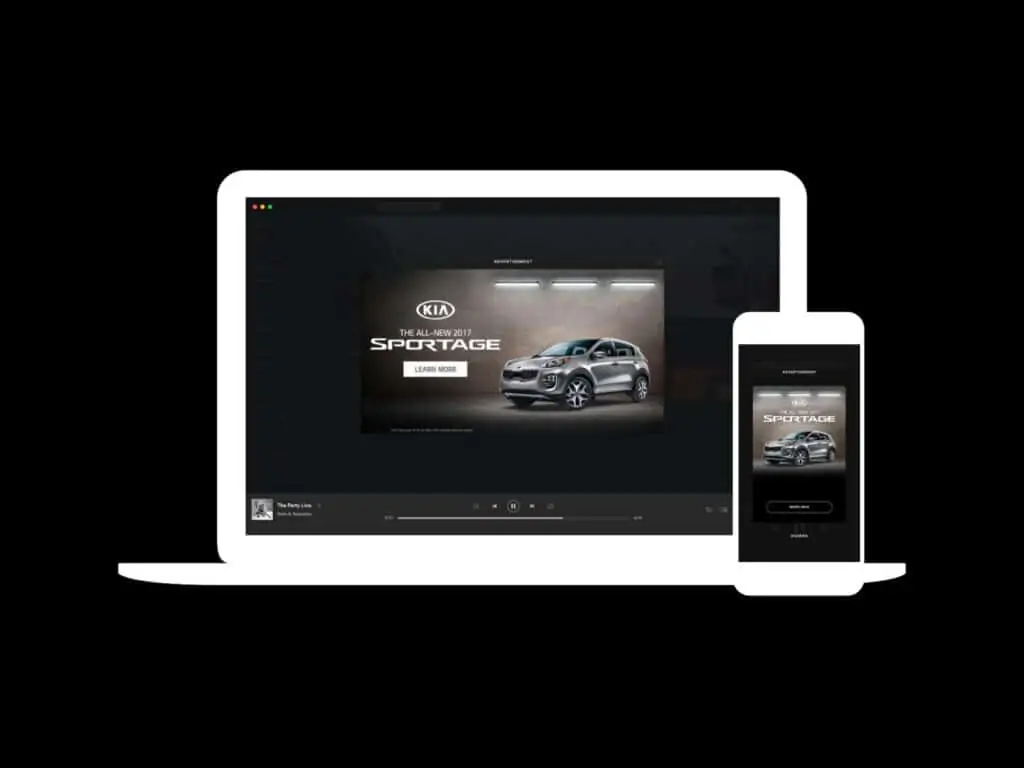
Branded Playlists contain a branded cover art image and a minimum of 20 tracks in the playlist with one song per artist.
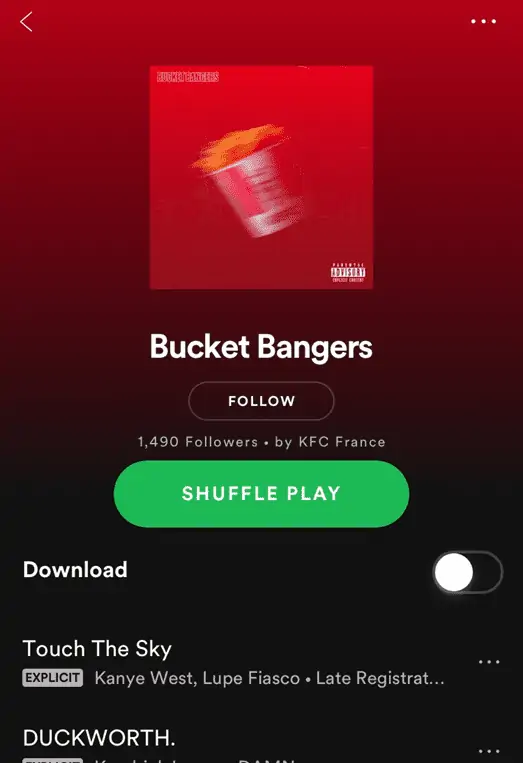
Spotify Cost Structure
Spotify’s costs can be attributed to royalties or licensing fees, and company operations.
Royalties are the payments Spotify makes to own the right to stream specific content on its platform, and it forms one of the significant expenses for the streaming service. As of 2020, Spotify has paid over $23 billion in royalties to rights holders. It owns two types of licenses and thus produces two types of royalties:
- Recording Royalty: Spotify has recording license agreements with big music labels like Sony Music Entertainment Group, Warner Music Group and Universal Music Group. Therefore recording royalty is the amount paid for the right Spotify holds to stream the actual recordings of these record labels on its platform. These record labels then direct payments to the individual artists or singers who perform and record the track.
- Composition Royalty: Spotify has composition license agreements with the original songwriters and composers as well. Therefore composition royalty is the amount paid for the right to stream the song’s composition, and it is delivered to the composers who own the lyrics and melody of the tracks.
Therefore when a premium or ad-supported user plays a song on the platform, Spotify pays recording royalty to the music label and the artist and pays composition royalty to the owners and composers of that song.
In addition, Spotify’s annual reports give us an insight into the extensive costs incurred by the company. The operation costs can be categorised into:
- Cost of Revenue: The cost of revenue of Spotify includes all the costs incurred to deliver the service and value to customers. For example- the cost of maintaining the website and app, salaries of employees, payment to partners, transaction fee, other overhead costs etc.
- Research and development: The research and development expenses include all costs incurred on personnel and facilities associated with the research and development of the service — for example – salaries to engineers etc.
- Sales and marketing: The sales and marketing expenses include all costs incurred on personnel and facilities related to sales, sales support, marketing, business development and customer service functions. For example- marketing employee expenses, professional hiring fees, advertising and promotional expenditures etc.
- General and administrative expenses: General and administrative expenses include all costs incurred on personnel and allocated facilities for general functions, administration, legal and financial purposes. For example- salaries to accountants and managers, administration overhead costs etc.

Mediachain Acquisition
Through the years the company was in the spotlight for numerous controversies related to not streaming unlicensed music on its platform for which the company had to pay millions of dollars as penalties to the artists. Spotify didn’t pay the royalties because it didn’t have the necessary data to figure out the correct ownership of the tracks and even how to locate the owners.
The company, to solve this problem, took the decentralised approach and introduced blockchain in its algorithm by acquiring Mediachain. The company created an open decentralised network that stores the data of every piece of music with the help of blockchain technology. The company has mentioned the whole process of how blockchain for music works and how the artists and the company will benefit from it.
Why didn’t Spotify choose the centralized approach?
A centralized “Global Repertoire Database” initiative, started in 2011 to aggregate ownership data in a central database, infamously failed in 2014 after millions of dollars of investment.

Spotify has helped millions of people connect with each other over their common love for music. It has helped different music reach different parts of the world. At this moment, Spotify has a smaller impact on the market compared to the others and its subscription fees are high. It needs to improve its business model and then it can be said that Spotify is the one enterprise which can make serious money from digital music.
Bottom Line
Spotify is the leading player in the online music streaming industry at present. However, the market share has reduced considerably with emerging players, with Apple Music posing the biggest threat.
Nonetheless, Spotify also acquired Mediachain Labs to bridge the gaps in its royalty expenditures. The blockchain startup will solve the payment of royalties to artists using blockchain technology and enhance Spotify’s operations by cutting costs.
In addition, Spotify has high streaming quality, trendy content, diverse catalogue, flexible connectivity and sharing options, diverse music and podcast catalogue and multiple ad formats. Therefore the platform has many avenues for growth in the upcoming years in the Music Streaming segment, where the number of users is expected to amount to 913.2million users by 2025.
Go On, Tell Us What You Think!
Did we miss something? Come on! Tell us what you think about our article on Spotify business model in the comments section.
A fervent reader, research maniac, and a go-getter with a knack for opinionated content. Janvi has actively contributed to educational institutions, startups, and non-profit organisations through her structured and expressive writings. Often found socialising, playing with dogs, and photographing.
